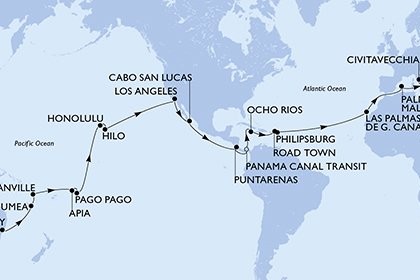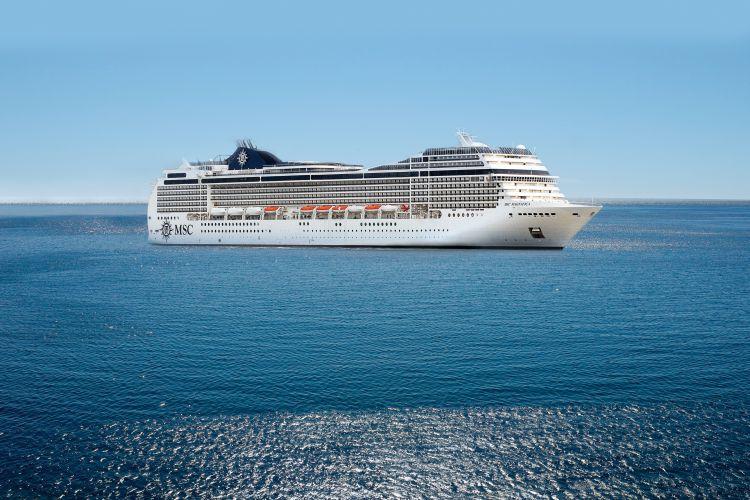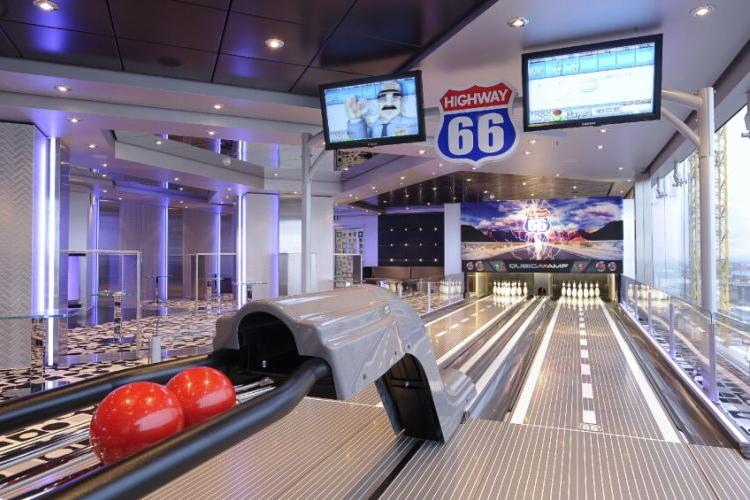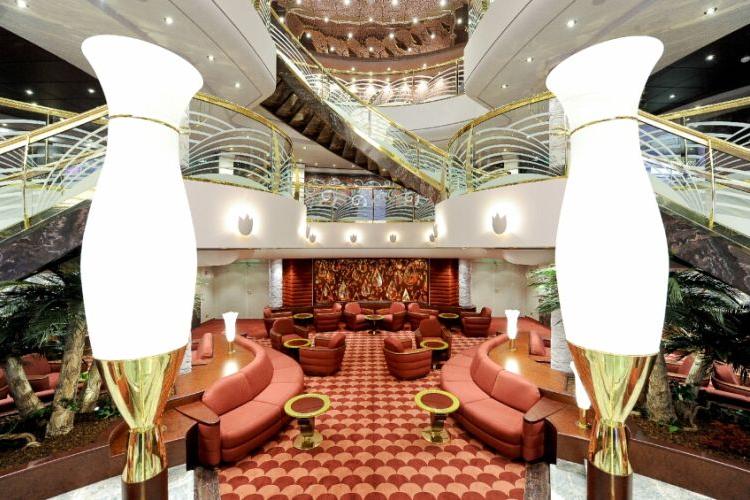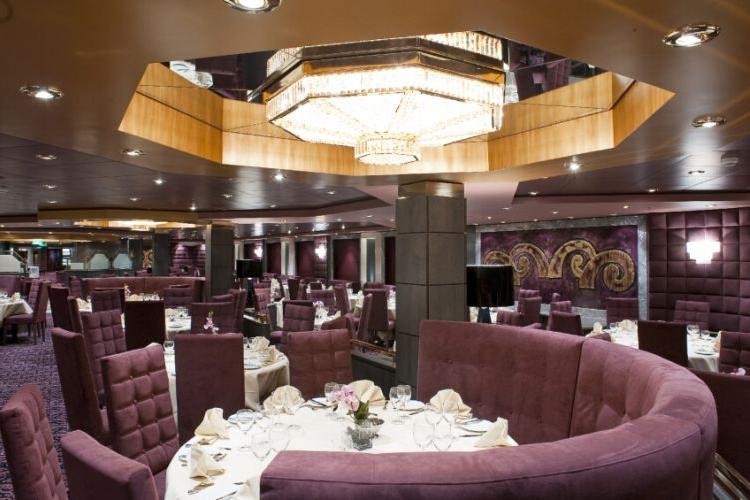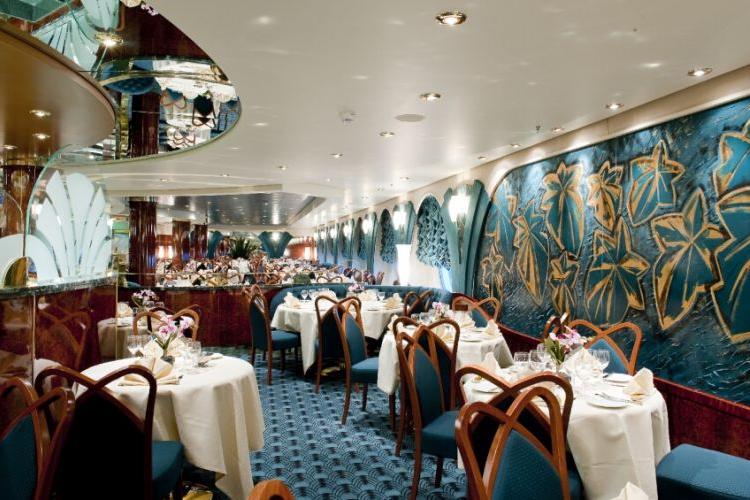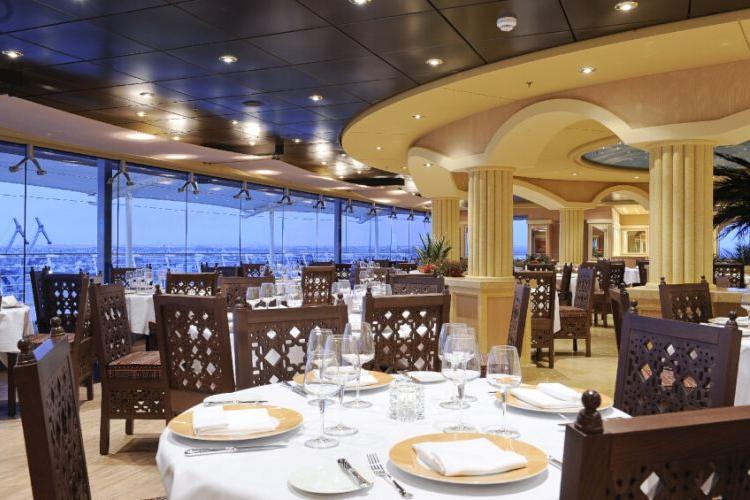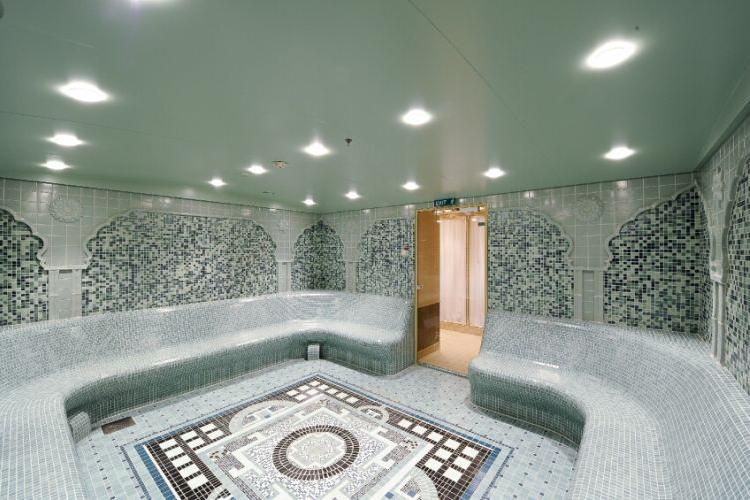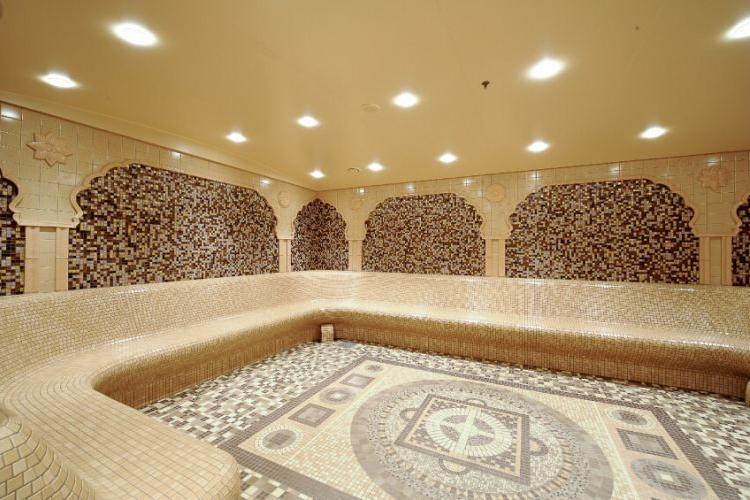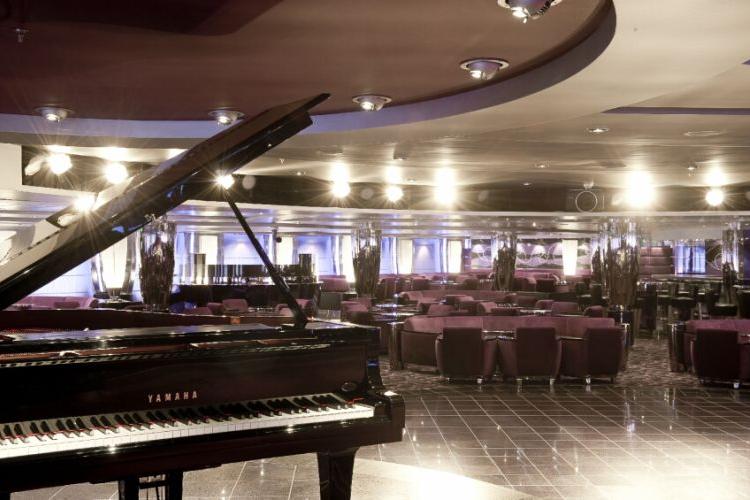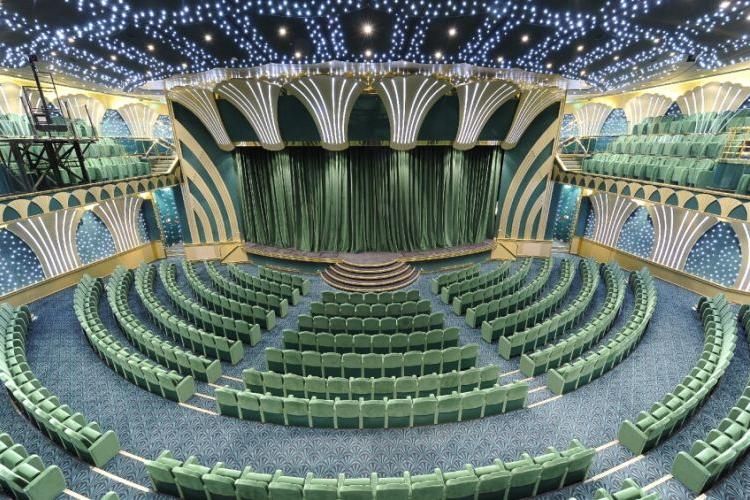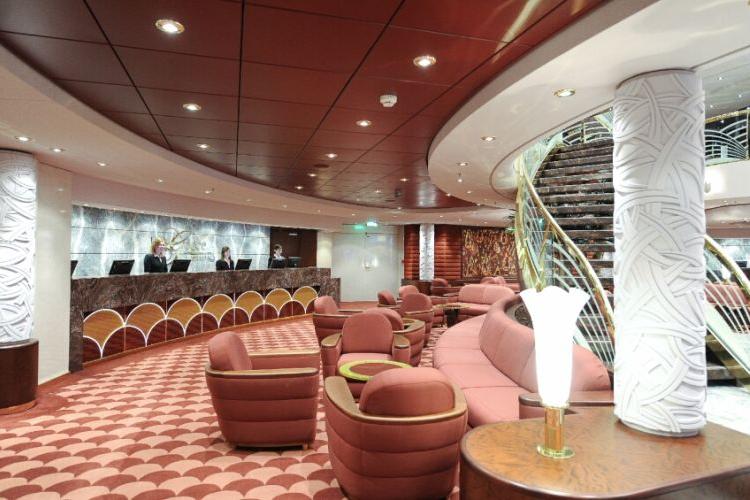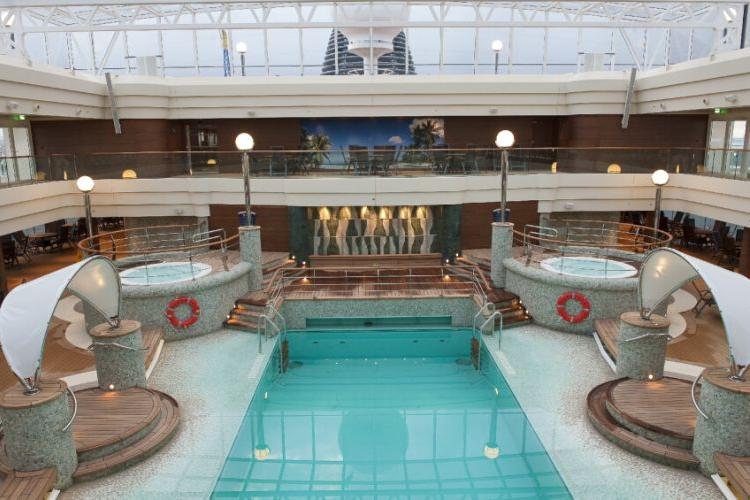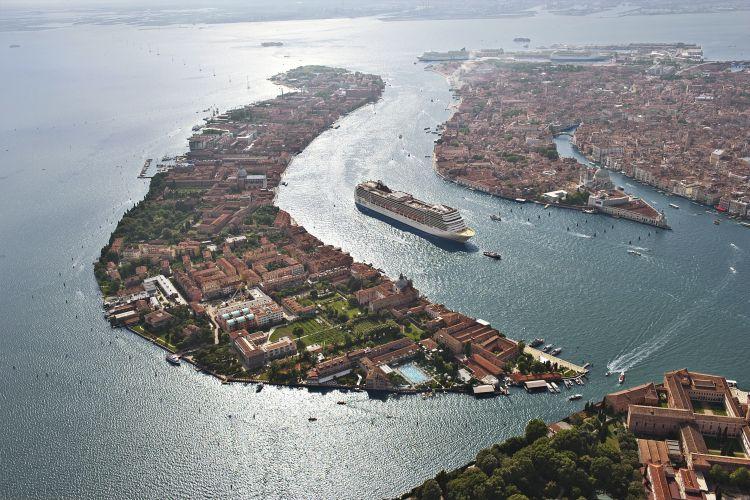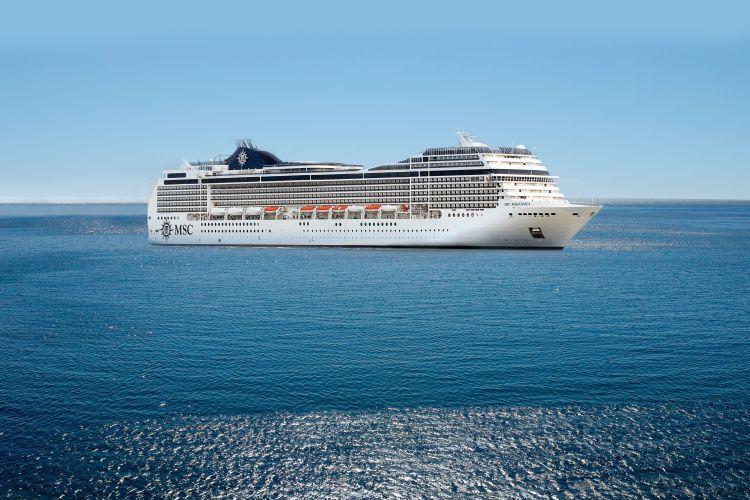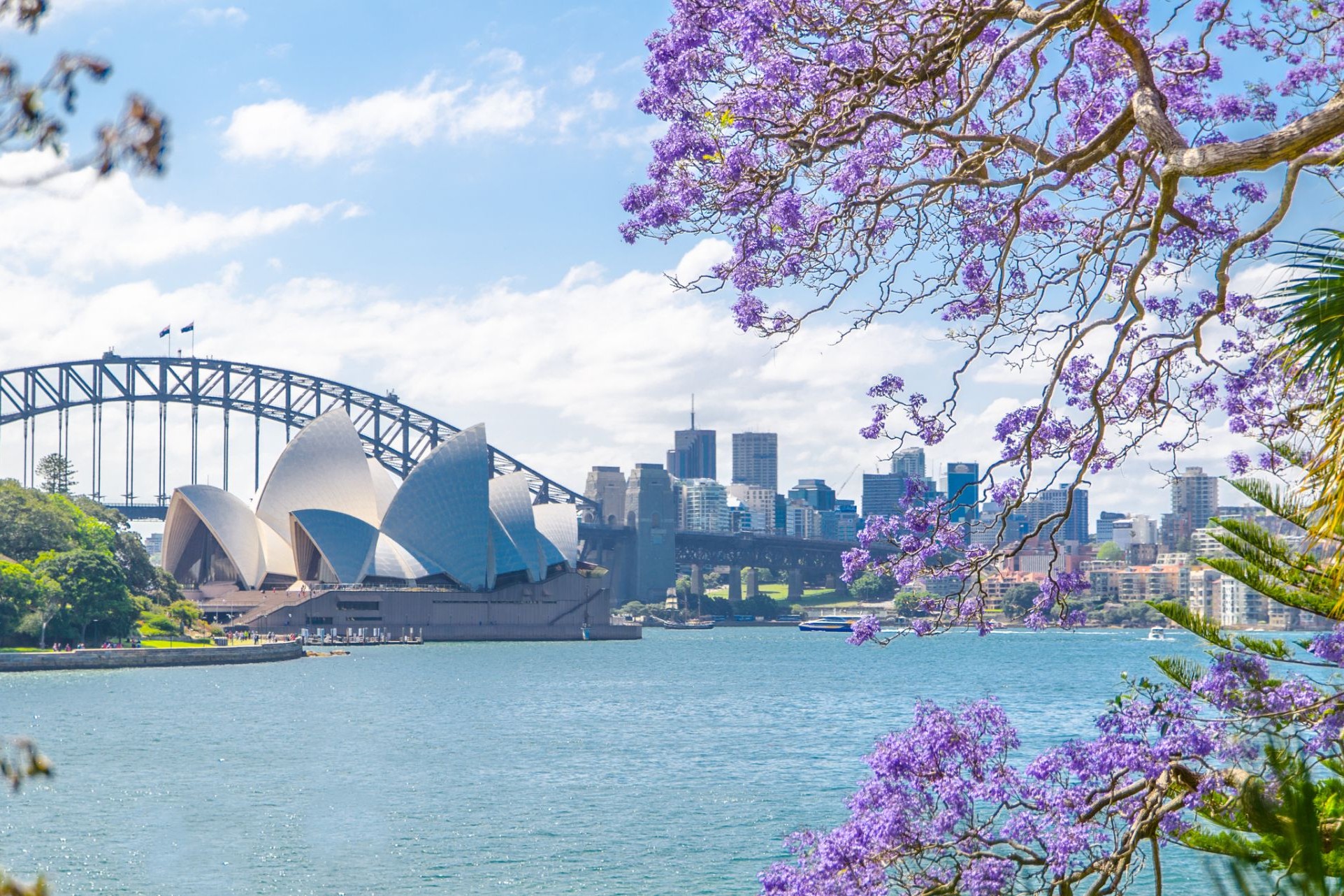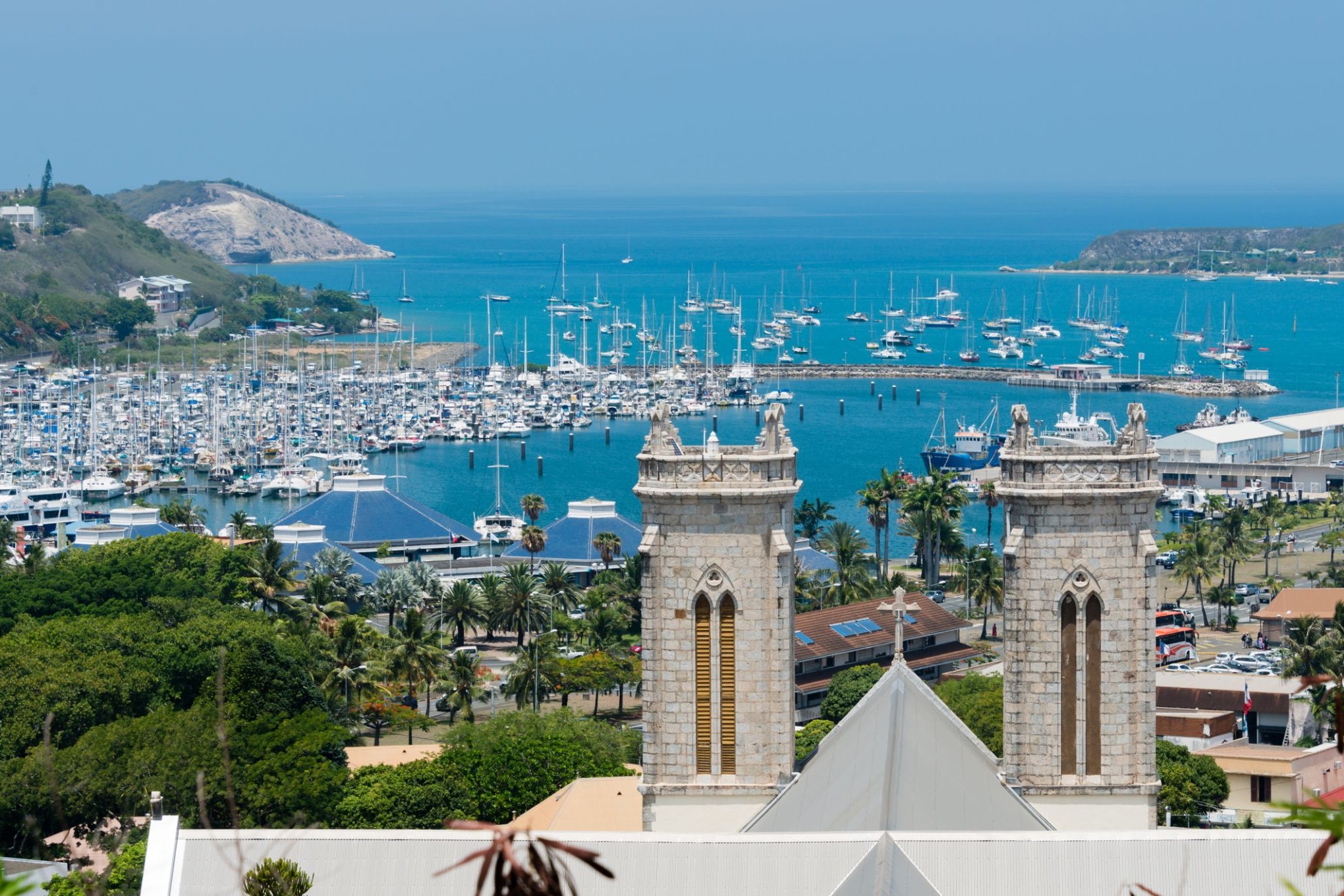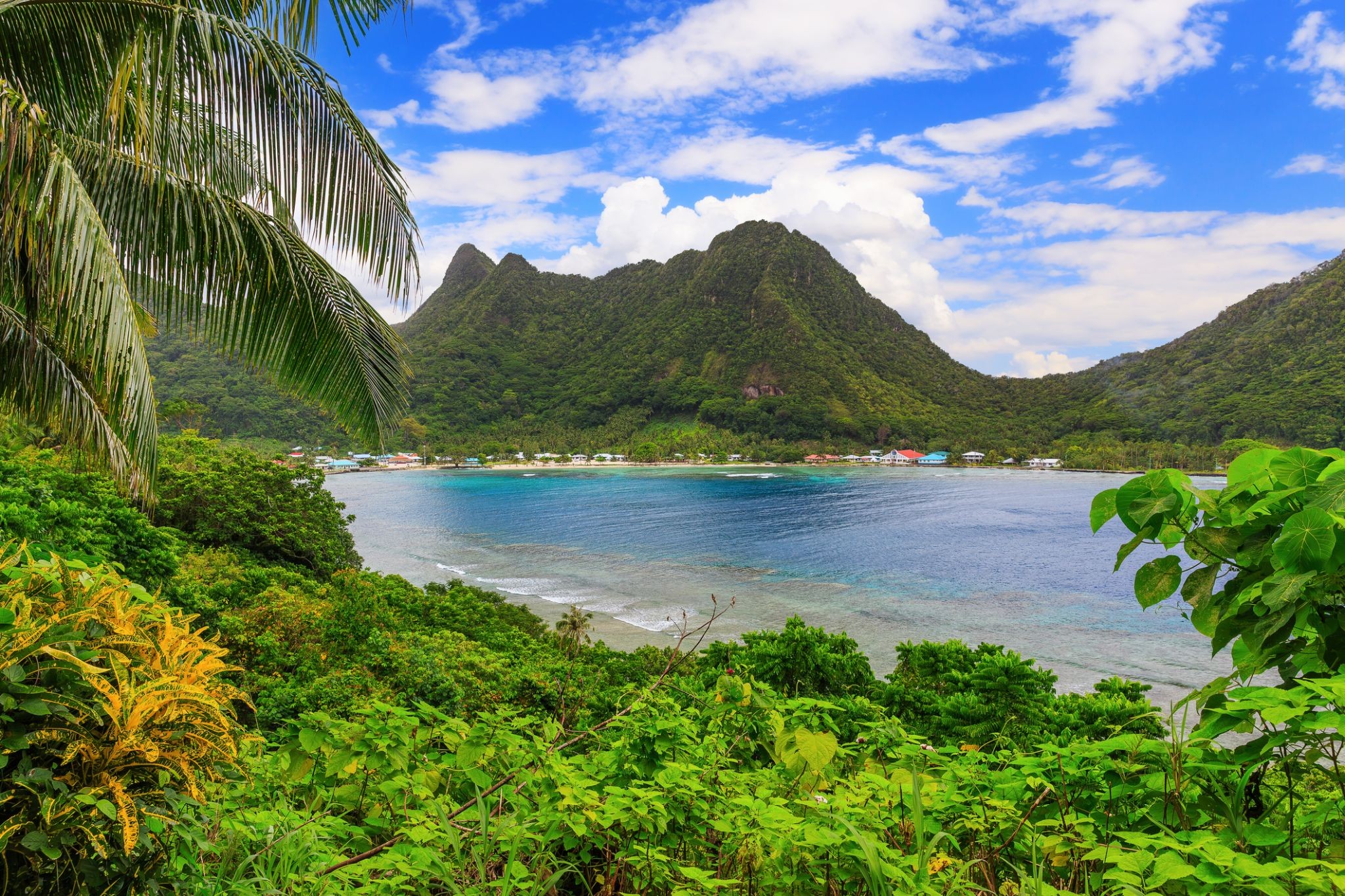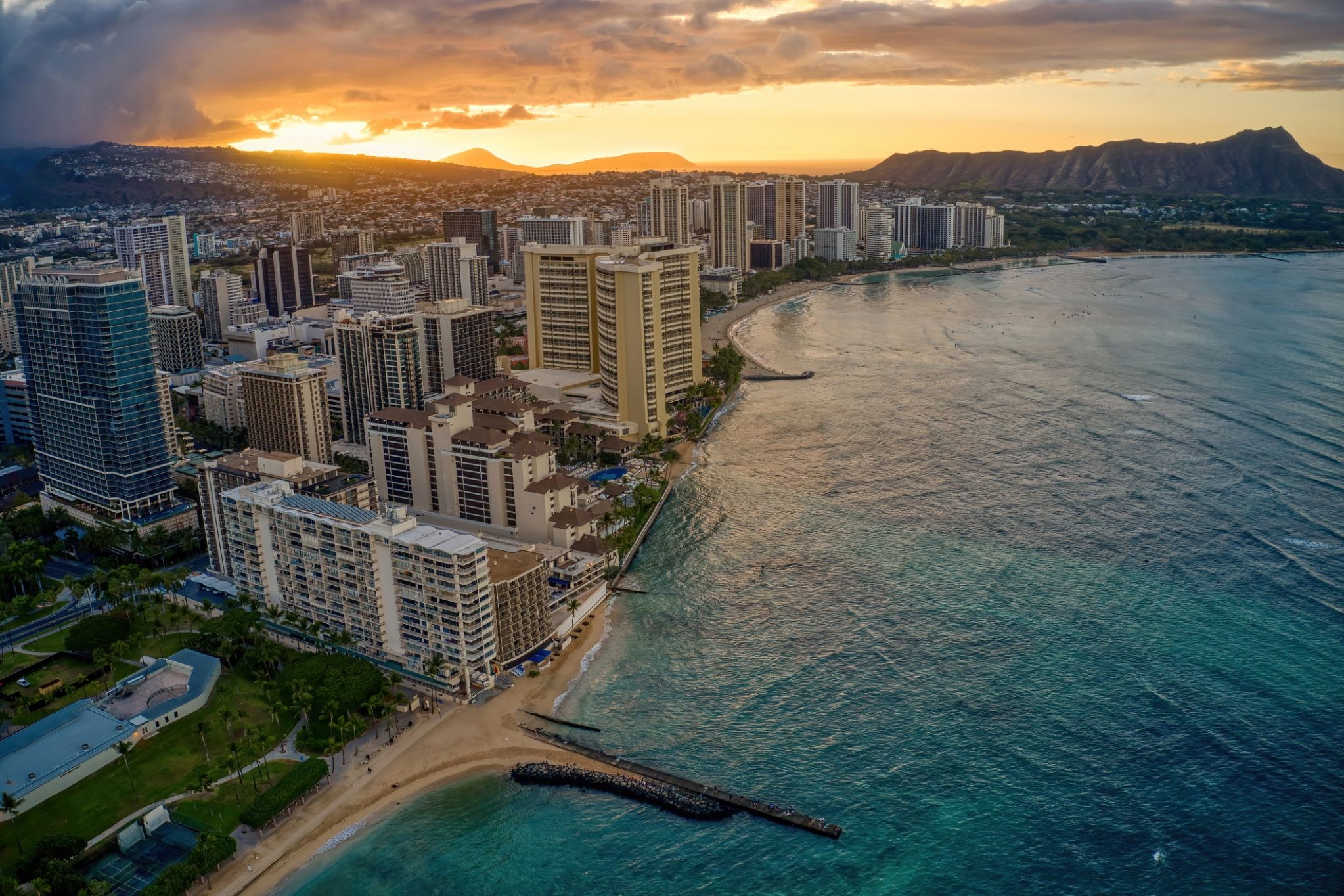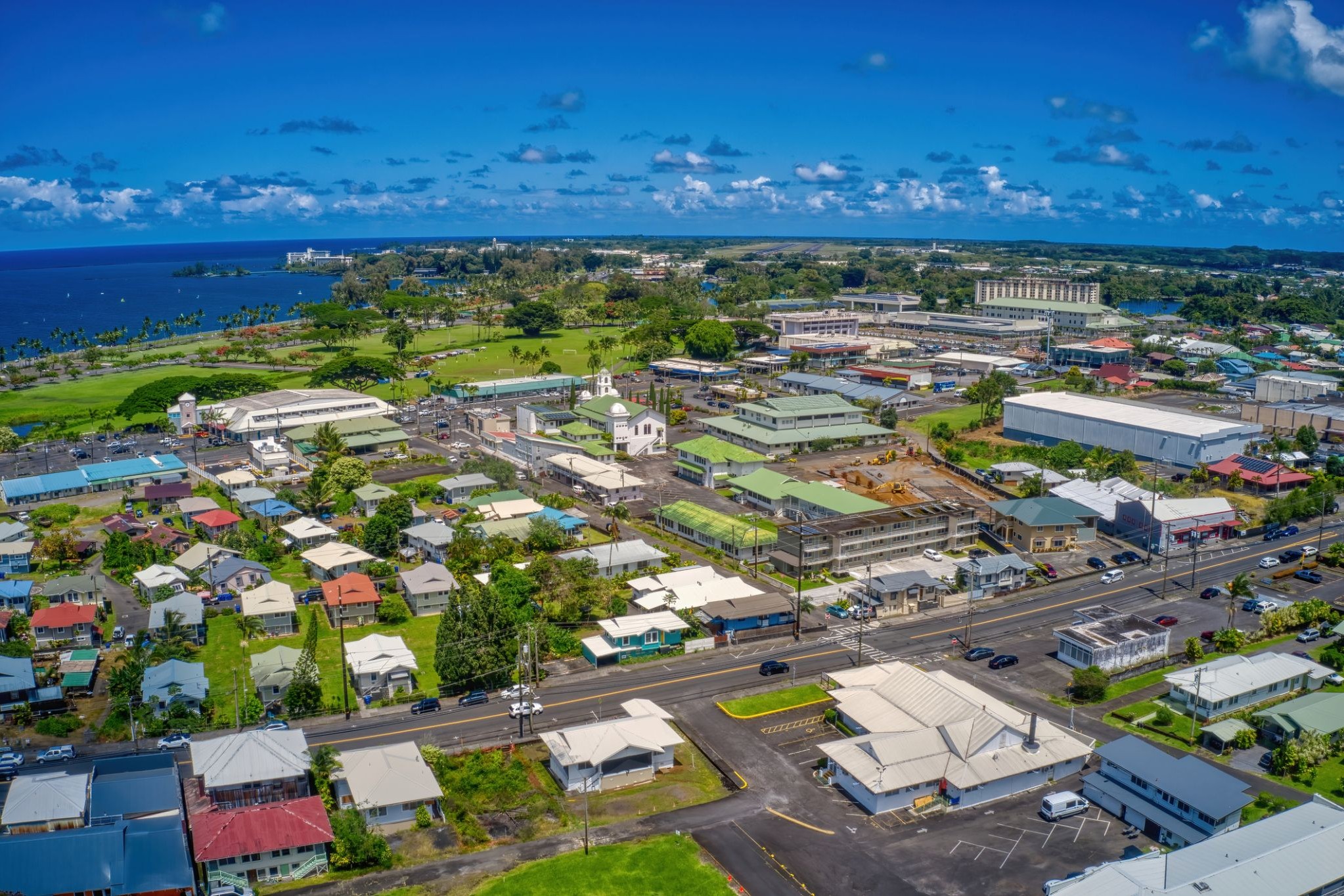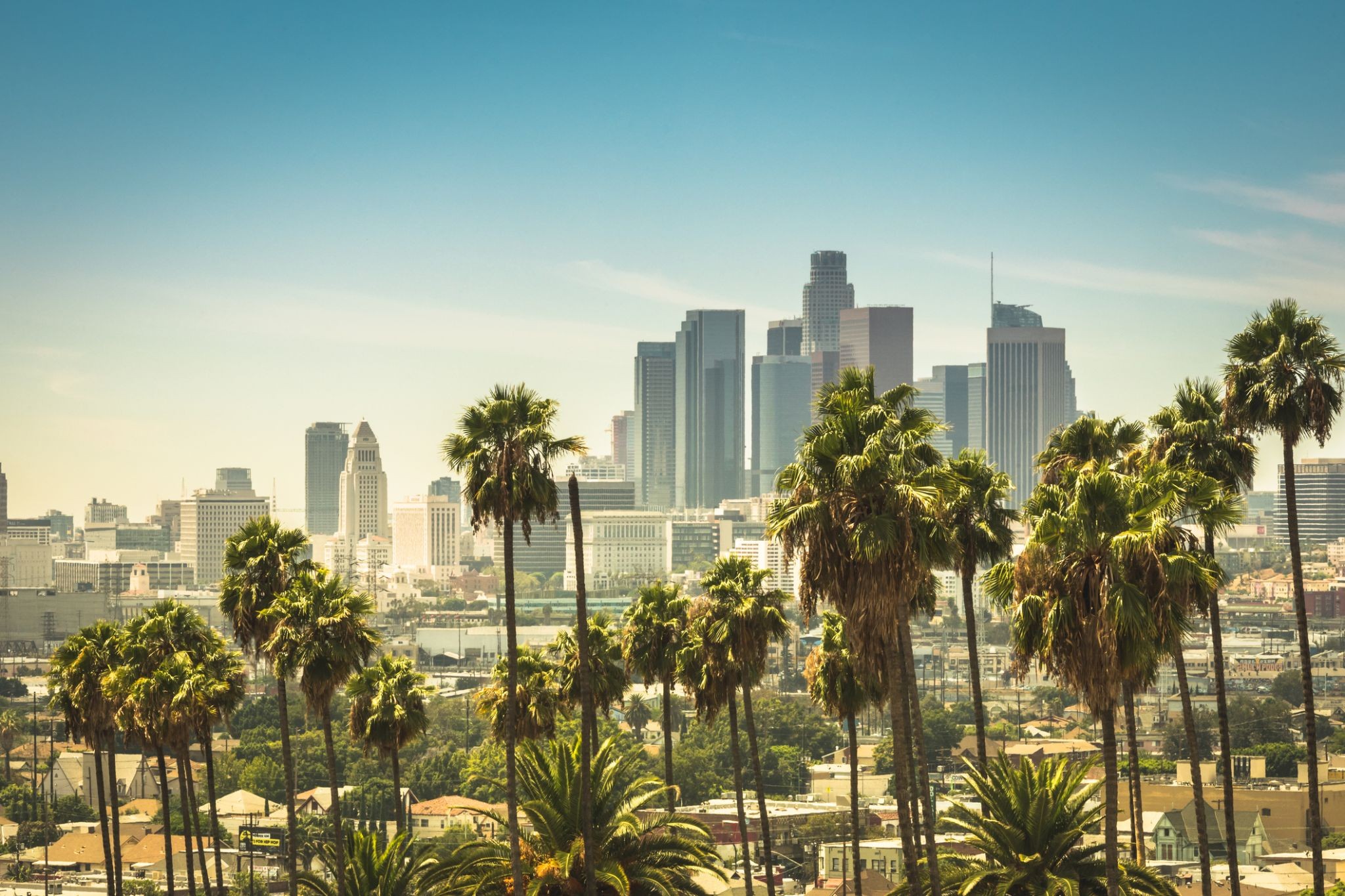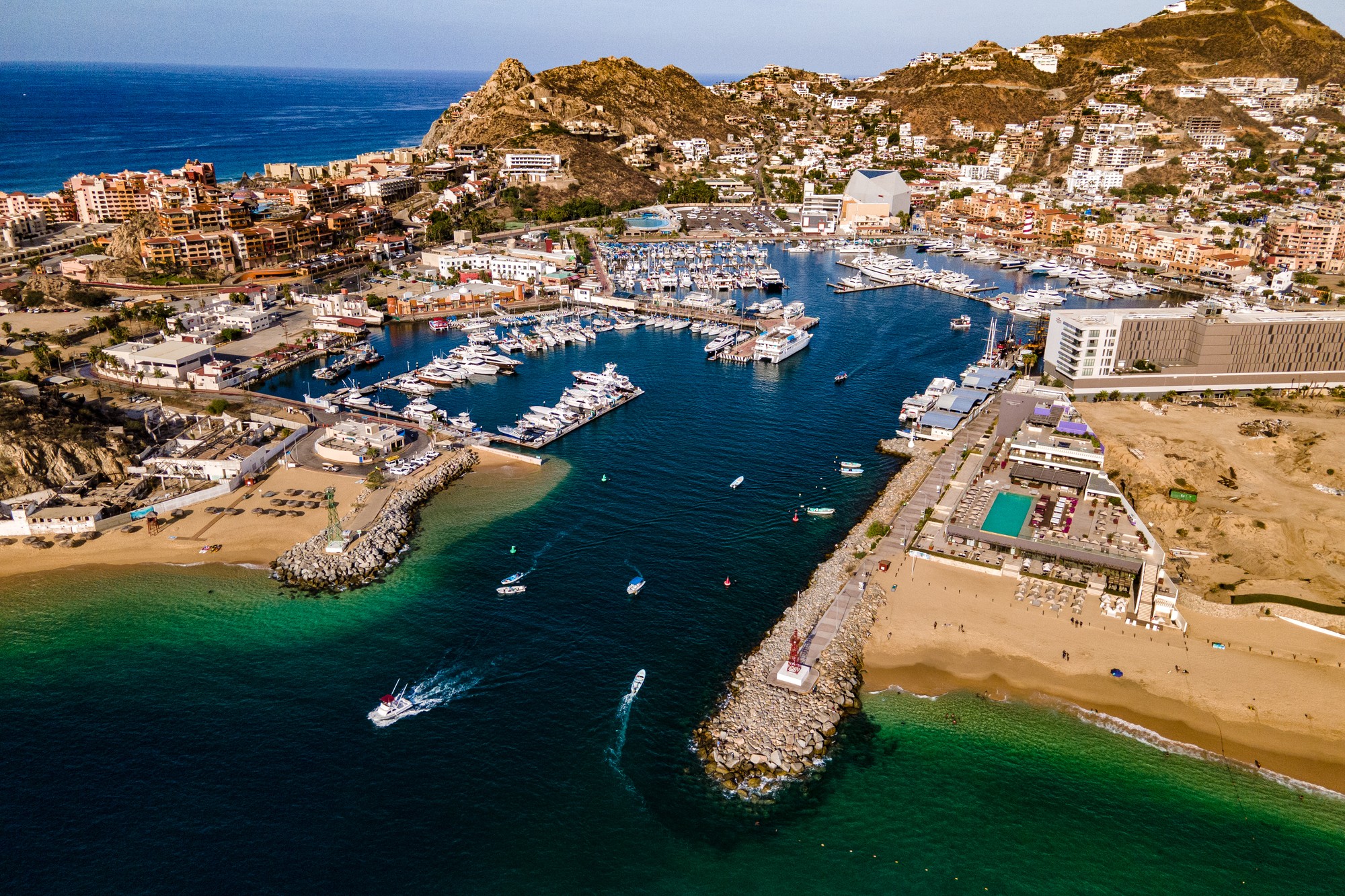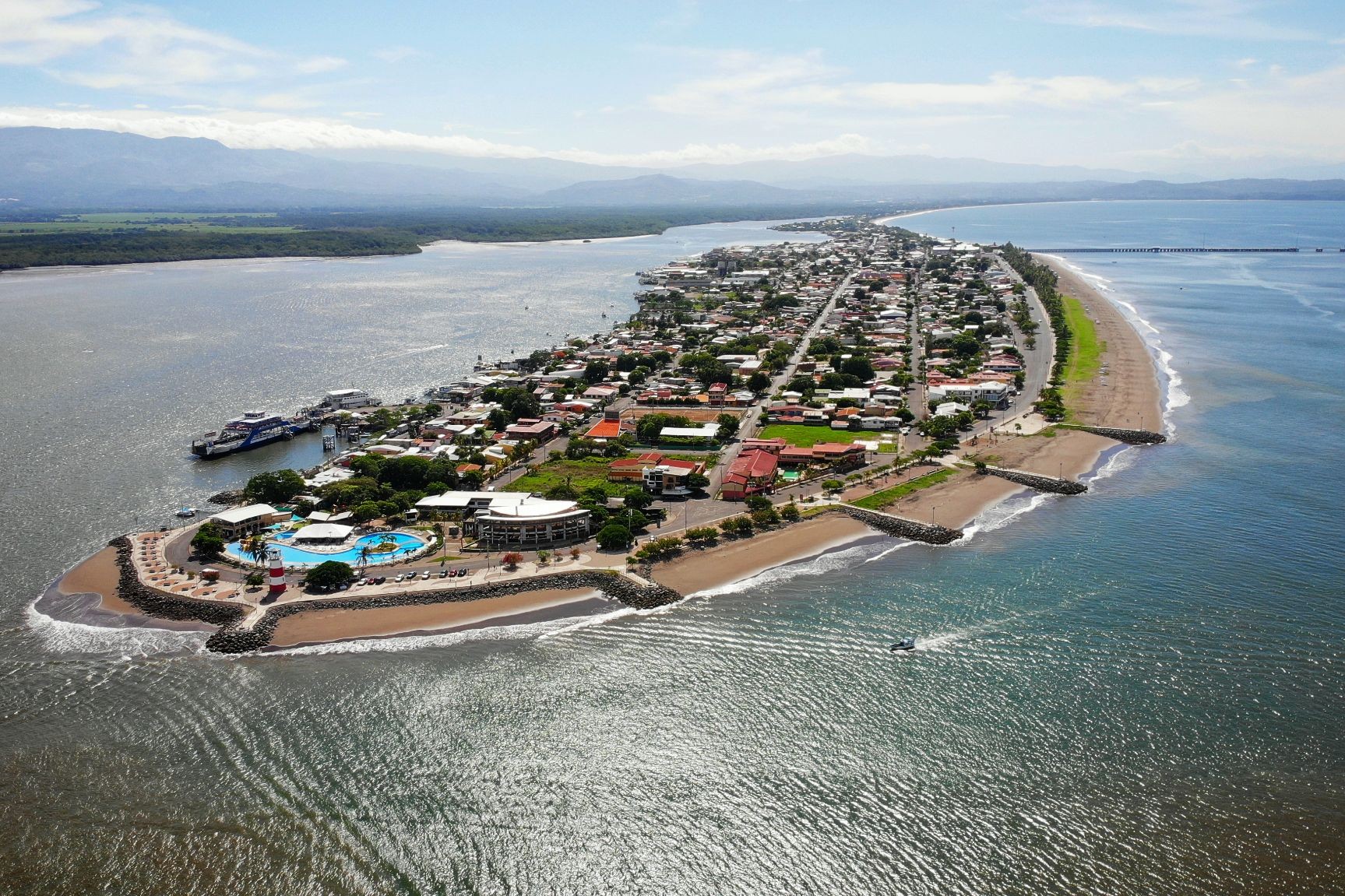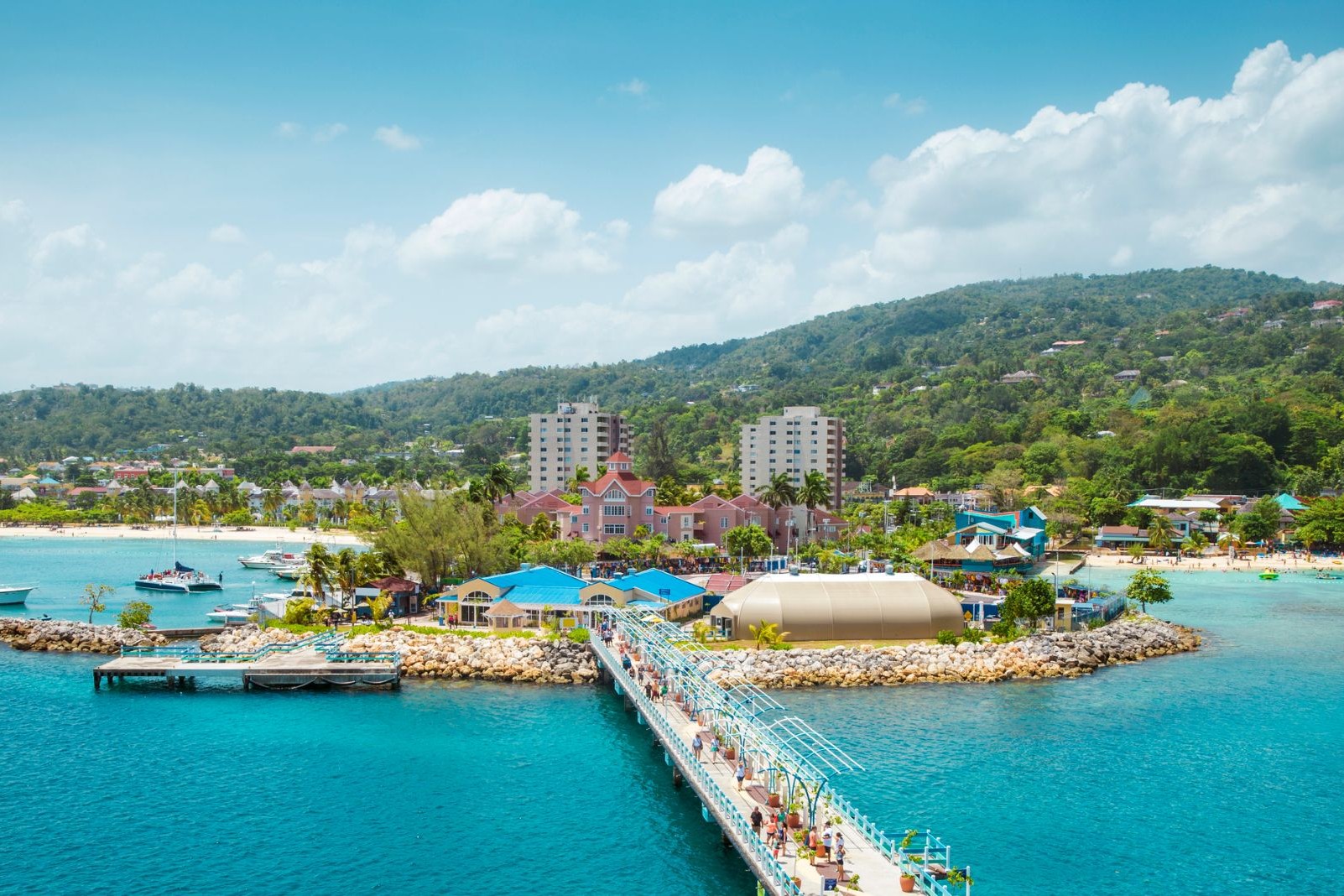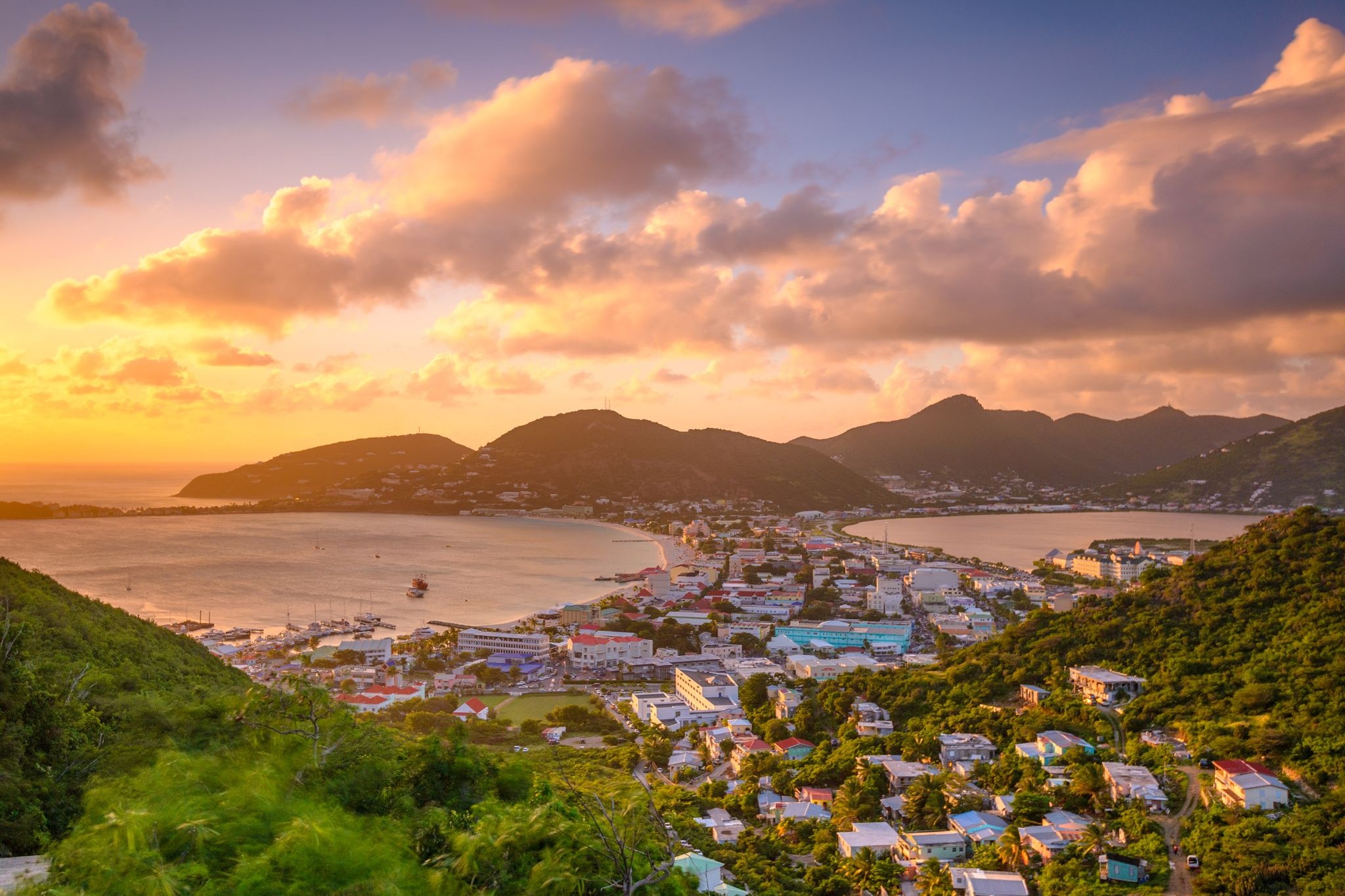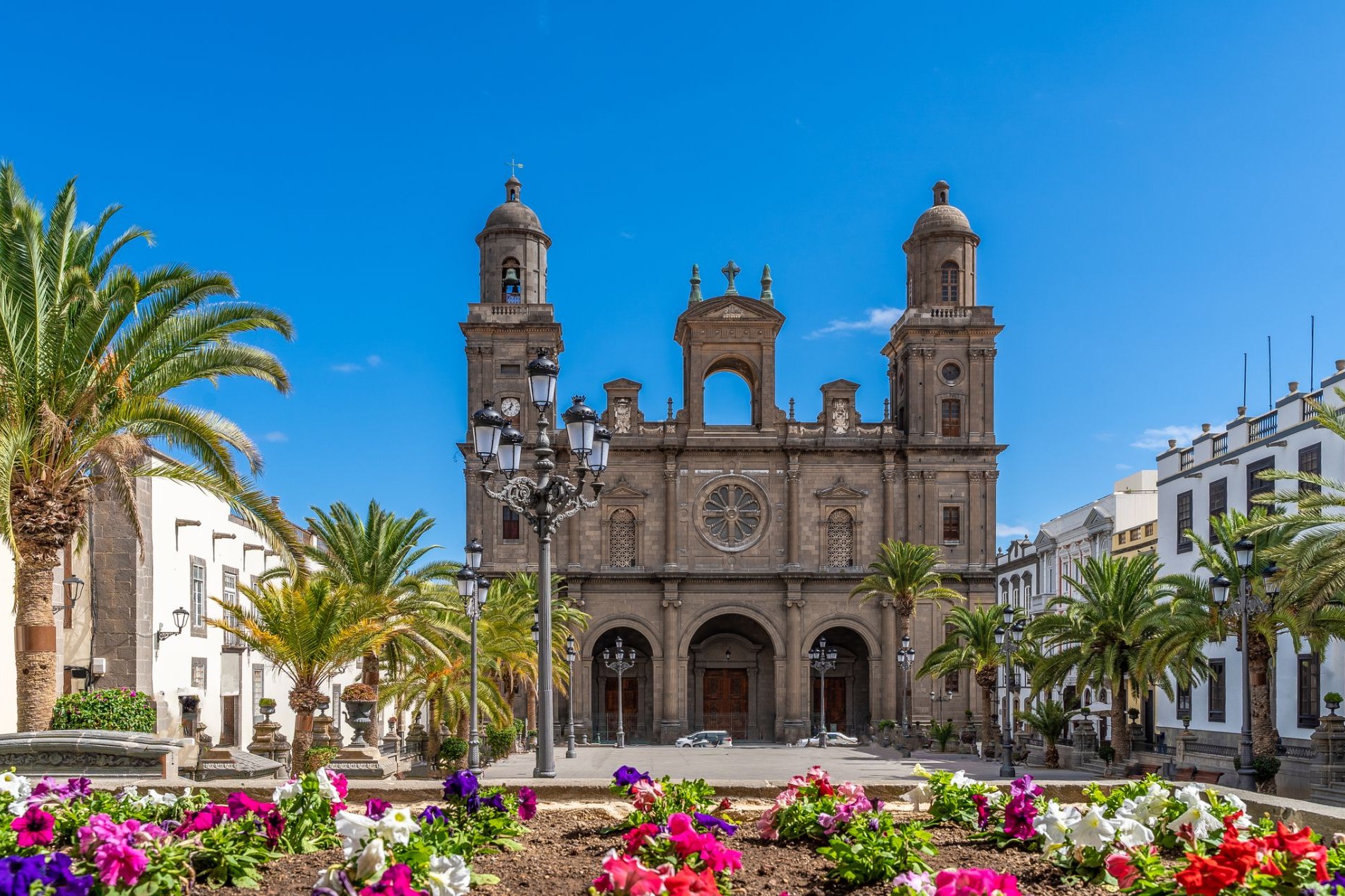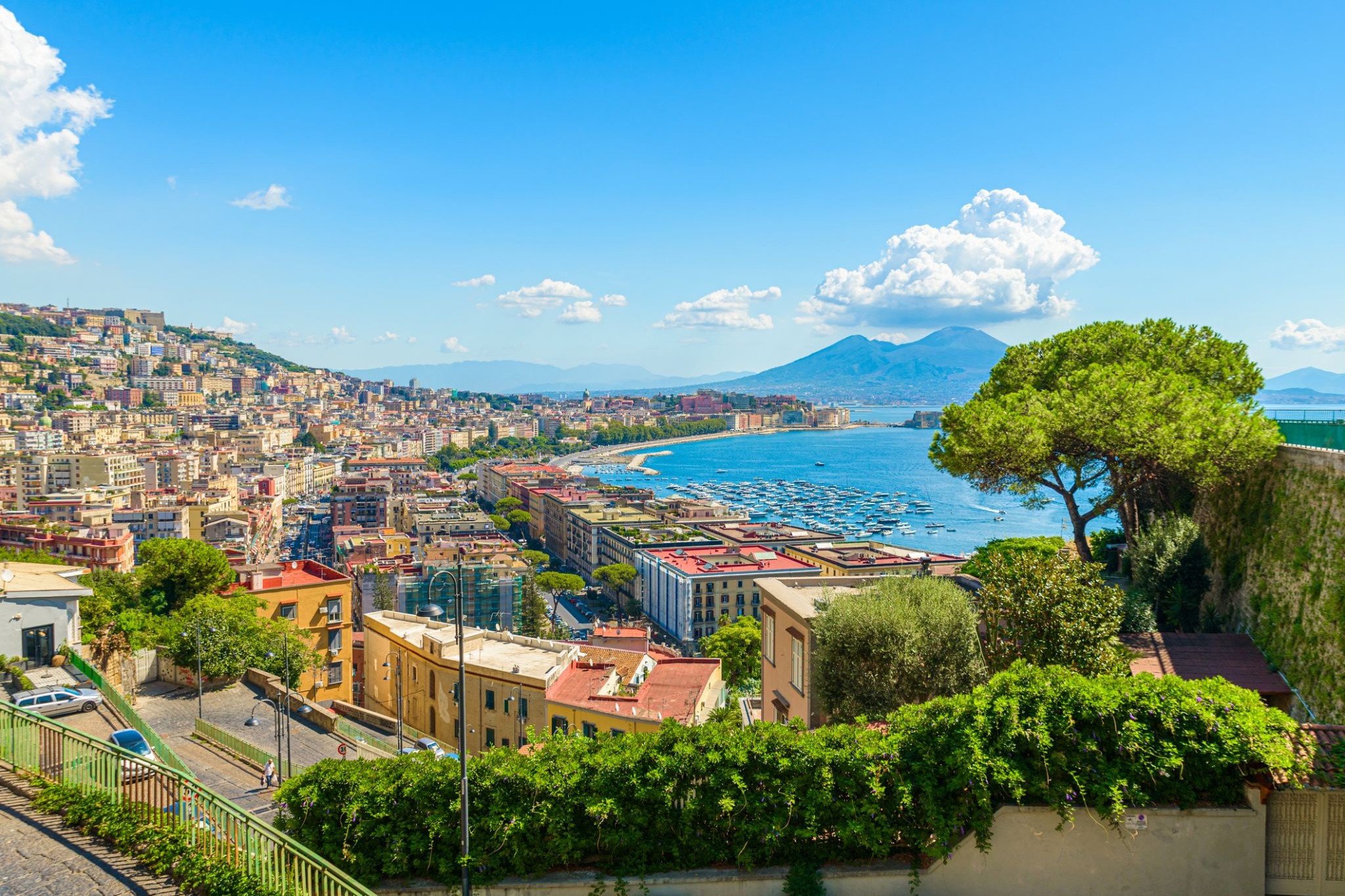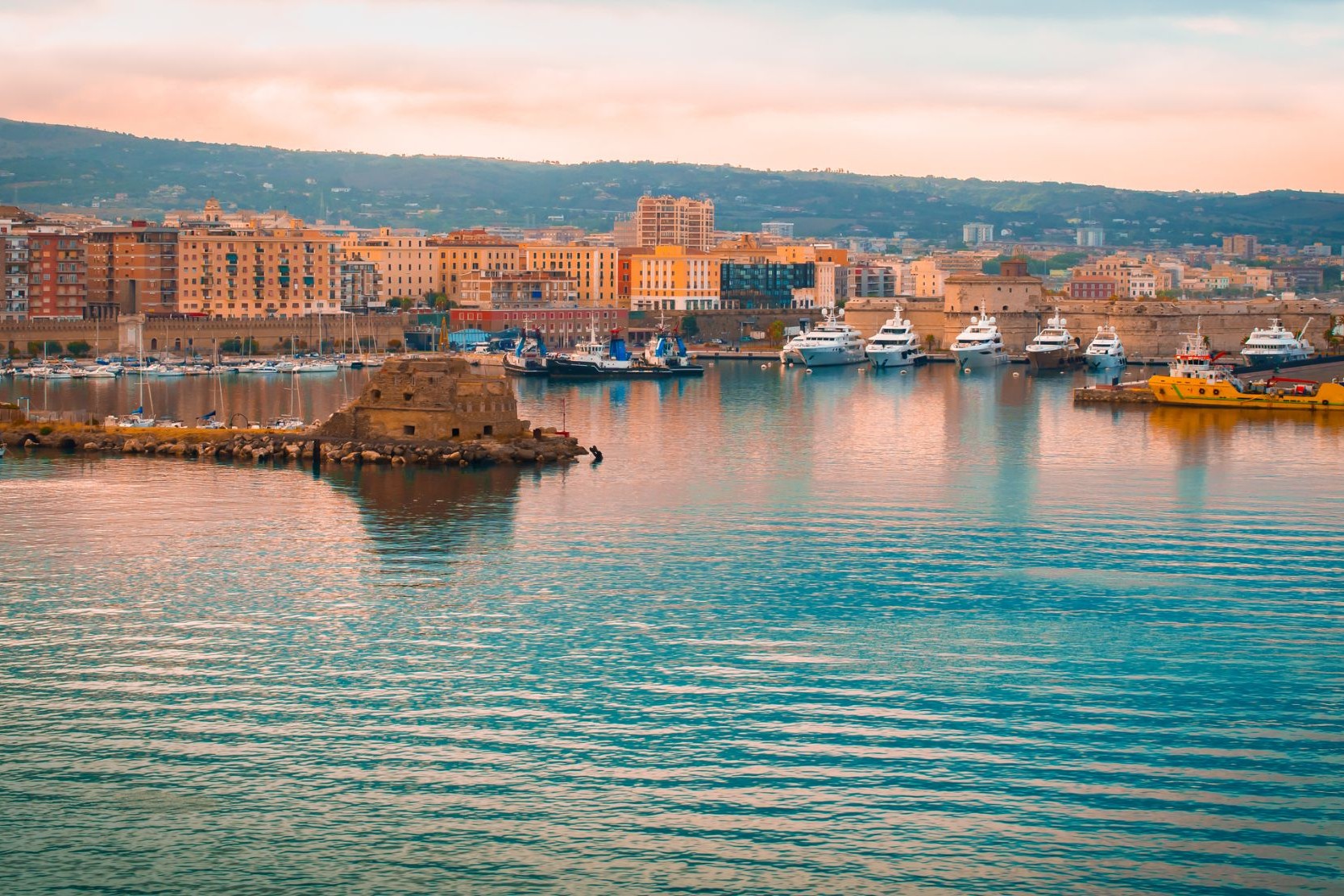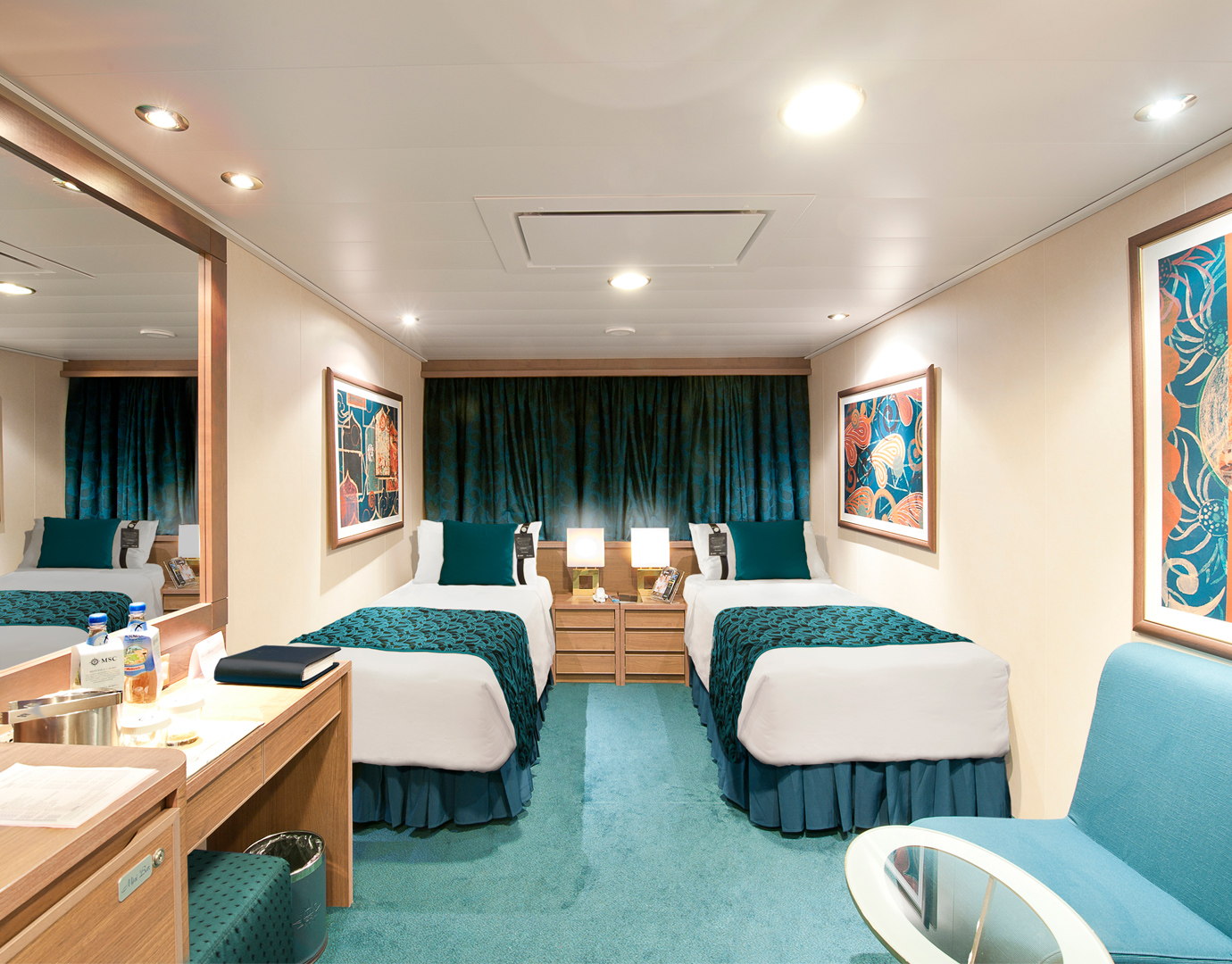Rejs 30 942 137
50 noclegów w Sydney, Noumea, Luganville, Apia, Pago Pago, Honolulu, Hilo, Los Angeles, Cabo San Lucas, Puntarenas
| Region rejsu : Australia / Nowa Zelandia, Oceania, Rejsy po Pacyfiku, Rejsy dookoła świata, kanał Panamski |
| Firma : MSC Cruises |
| Statek : MSC Magnifica |
| Data rozpoczęcia : wt. 16 mar 2027 |
| Data zakończenia : śr. 05 maj 2027 |
| Liczba nocy : 50 nocy |
Harmonogram
| Dzień | Data | Port | Wypłynięcie | Odpłynięcie |
|---|---|---|---|---|
| 1 | 16.03 wt. | Sydnej / Australia | 20:00 | |
| 2 | 17.03 śr. | Dzień na morzu / Morze | ||
| 3 | 18.03 czw. | Dzień na morzu / Morze | ||
| 4 | 19.03 pt. | Numea / Nowa Kaledonia | 09:00 | 18:00 |
| 5 | 20.03 sob. | Dzień na morzu / Morze | ||
| 8 | 23.03 wt. | Dzień na morzu / Morze | ||
| 9 | 24.03 śr. | Dzień na morzu / Morze | ||
| 10 | 25.03 czw. | Apia / Samoa | 08:00 | 18:00 |
| 10 | 25.03 czw. | Pago-Pago / Samoa | 08:00 | 18:00 |
| 11 | 26.03 pt. | Dzień na morzu / Morze | ||
| 12 | 27.03 sob. | Dzień na morzu / Morze | ||
| 13 | 28.03 niedz. | Dzień na morzu / Morze | ||
| 14 | 29.03 pon. | Dzień na morzu / Morze | ||
| 15 | 30.03 wt. | Dzień na morzu / Morze | ||
| 16 | 31.03 śr. | Honolulu, Oahu, Hawaje / Hawaje | 07:00 | 18:00 |
| 17 | 1.04 czw. | Hilo / Hawaje | 08:00 | 18:00 |
| 18 | 2.04 pt. | Dzień na morzu / Morze | ||
| 19 | 3.04 sob. | Dzień na morzu / Morze | ||
| 20 | 4.04 niedz. | Dzień na morzu / Morze | ||
| 21 | 5.04 pon. | Dzień na morzu / Morze | ||
| 22 | 6.04 wt. | Dzień na morzu / Morze | ||
| 23 | 7.04 śr. | Los Angeles / USA | 08:00 | 18:00 |
| 24 | 8.04 czw. | Dzień na morzu / Morze | ||
| 25 | 9.04 pt. | Dzień na morzu / Morze | ||
| 26 | 10.04 sob. | Cabo San Lucas / Meksyk | 08:00 | 16:00 |
| 27 | 11.04 niedz. | Dzień na morzu / Morze | ||
| 28 | 12.04 pon. | Dzień na morzu / Morze | ||
| 29 | 13.04 wt. | Dzień na morzu / Morze | ||
| 30 | 14.04 śr. | Puntarenas / Costa Rica | 10:00 | 18:00 |
| 31 | 15.04 czw. | Dzień na morzu / Morze | 05:15 | |
| 31 | 15.04 czw. | Kanał Panamski / Panama | 17:00 | |
| 32 | 16.04 pt. | Kanał BLB-Panam / Panama | 05:00 | 17:15 |
| 33 | 17.04 sob. | Dzień na morzu / Morze | ||
| 34 | 18.04 niedz. | Ocho-Rios / Jamajka | 08:00 | 18:00 |
| 35 | 19.04 pon. | Dzień na morzu / Morze | ||
| 36 | 20.04 wt. | Dzień na morzu / Morze | ||
| 37 | 21.04 śr. | Road Town, Tortola / Wyspy Dziewicze | 08:00 | 18:00 |
| 38 | 22.04 czw. | Philipsburg / Saint Martin | 08:00 | 18:00 |
| 39 | 23.04 pt. | Dzień na morzu / Morze | ||
| 40 | 24.04 sob. | Dzień na morzu / Morze | ||
| 41 | 25.04 niedz. | Dzień na morzu / Morze | ||
| 42 | 26.04 pon. | Dzień na morzu / Morze | ||
| 43 | 27.04 wt. | Dzień na morzu / Morze | ||
| 44 | 28.04 śr. | Dzień na morzu / Morze | ||
| 45 | 29.04 czw. | Las Palmas (Gran Canaria) / Hiszpania | 08:00 | 18:00 |
| 46 | 30.04 pt. | Dzień na morzu / Morze | ||
| 47 | 1.05 sob. | Dzień na morzu / Morze | ||
| 48 | 2.05 niedz. | Palma de Mallorca / Hiszpania | 10:00 | 19:00 |
| 49 | 3.05 pon. | Dzień na morzu / Morze | ||
| 50 | 4.05 wt. | Neapol / Włochy | 08:00 | 19:00 |
| 51 | 5.05 śr. | Rzym (Civitavecchia) / Włochy | 08:00 |
- zakwaterowanie w kabinie wybranej kategorii;
- wyżywienie - 3 główne posiłki, przekąski między posiłkami;
- napoje serwowane do śniadania i w bufetach samoobsługowych;
- napiwki dla obsługi (kwota zależy od długości rejsu);
- serwis bagażowy podczas wejścia i zejścia ze statku;
- serwis kabinowy;
- korzystanie ze wszystkich urządzeń sportowo - rekreacyjnych znajdujących się na pokładzie statku (basen, jacuzzi, sala fitness, itp.);
- udział we wszystkich imprezach organizowanych na statku (przedstawienia w teatrze, koncerty, programy animacyjne itp.);
- opłaty portowe.
Koszty dodatkowe:
- ubezpieczenie (ubezpieczenie medyczne, ubezpieczenie od odwołania podróży)
- bilet lotniczy, transport kolejowy (koszty transportu do portu wyjścia i z portu przybycia statku)
- transfery (z lotniska/dworca kolejowego do portu morskiego i z powrotem)
- wycieczki
- rezerwacje hotelowe przed i po rejsie, jeśli chcesz przedłużyć swoje wakacje na lądzie.
Dodatkowo płatne na statku:
- odwiedzanie alternatywnych barów i restauracji
- usługi ośrodków SPA, fryzjerów, salonów kosmetycznych
- Usługi medyczne
- pranie, prasowanie
- kasyno
- automaty do gry itp. w zależności od konkretnego modelu.
Za każdy zakup towarów w barach, restauracjach, sklepach i punktach usługowych, takich jak SPA, fryzjer itp. pobierana jest dodatkowa opłata za obsługę, której średnia wysokość wynosi 15% ceny zakupu.
Warunki kary:
- Ponad 60 dni przed wyjazdem: 50 euro za osobę
- od 59 do 30 dni: 30%
- od 29 do 22 dni: 50%
- od 21 do 15 dni: 70%
- 14 dni lub mniej przed wyjazdem: 100%
-
 Dzień 1: 20:00
Dzień 1: 20:00Sydnej / Australia
Sydney is the state capital of New South Wales and the most populous city in Australiaand Oceania. Located on Australia's east coast, the metropolis surrounds Port Jackson and extends about 70 km (43.5 mi) on its periphery towards the Blue Mountains to the west, Hawkesbury to the north, and Macarthur to the south. Sydney is made up of 658 suburbs, 40 local government areas and 15 contiguous regions. Residents of the city are known as "Sydneysiders". As of June 2017, Sydney's estimated metropolitan population was 5,131,326, and is home to approximately 65% of the state's population.
-
 Dzień 2:
Dzień 2:Dzień na morzu / Morze
-
 Dzień 3:
Dzień 3:Dzień na morzu / Morze
-
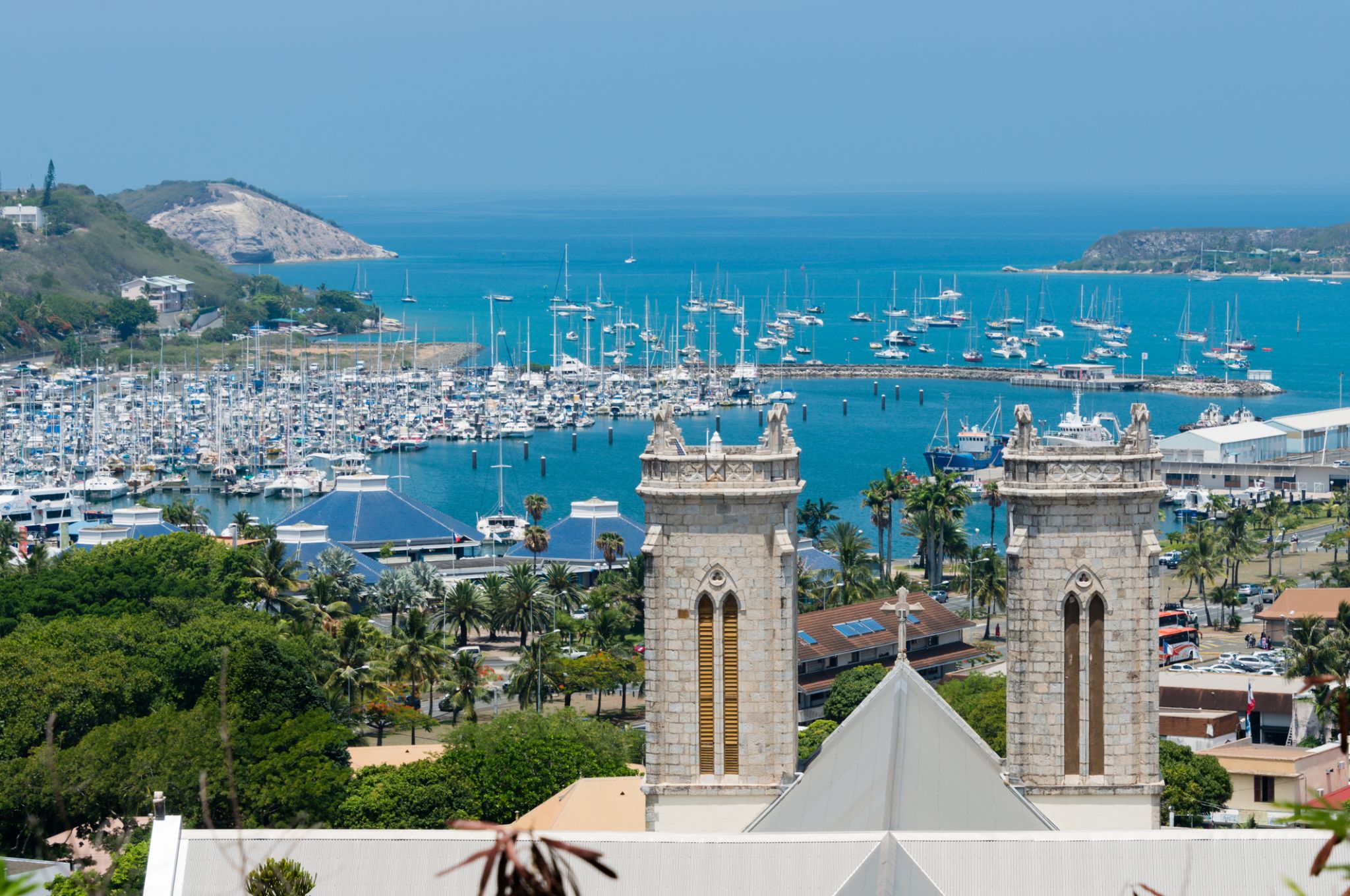 Dzień 4: 09:00-18:00
Dzień 4: 09:00-18:00Numea / Nowa Kaledonia
Nouméa is the capital and largest city of the French special collectivity of New Caledonia. It is situated on a peninsula in the south of New Caledonia's main island, Grande Terre, and is home to the majority of the island's European, Polynesian (Wallisians, Futunians, Tahitians), Indonesian, and Vietnamesepopulations, as well as many Melanesians, Ni-Vanuatu and Kanaks who work in one of the South Pacific's most industrialised cities. The city lies on a protected deepwater harbour that serves as the chief port for New Caledonia.
At the August 2014 census, there were 179,509 inhabitants in the metropolitan area of Greater Nouméa (French: agglomération du Grand Nouméa), 99,926 of whom lived in the city (commune) of Nouméa proper. 66.8% of the population of New Caledonia live in Greater Nouméa, which covers the communes of Nouméa, Le Mont-Dore, Dumbéa and Païta.
-
 Dzień 5:
Dzień 5:Dzień na morzu / Morze
-
 Dzień 8:
Dzień 8:Dzień na morzu / Morze
-
 Dzień 9:
Dzień 9:Dzień na morzu / Morze
-
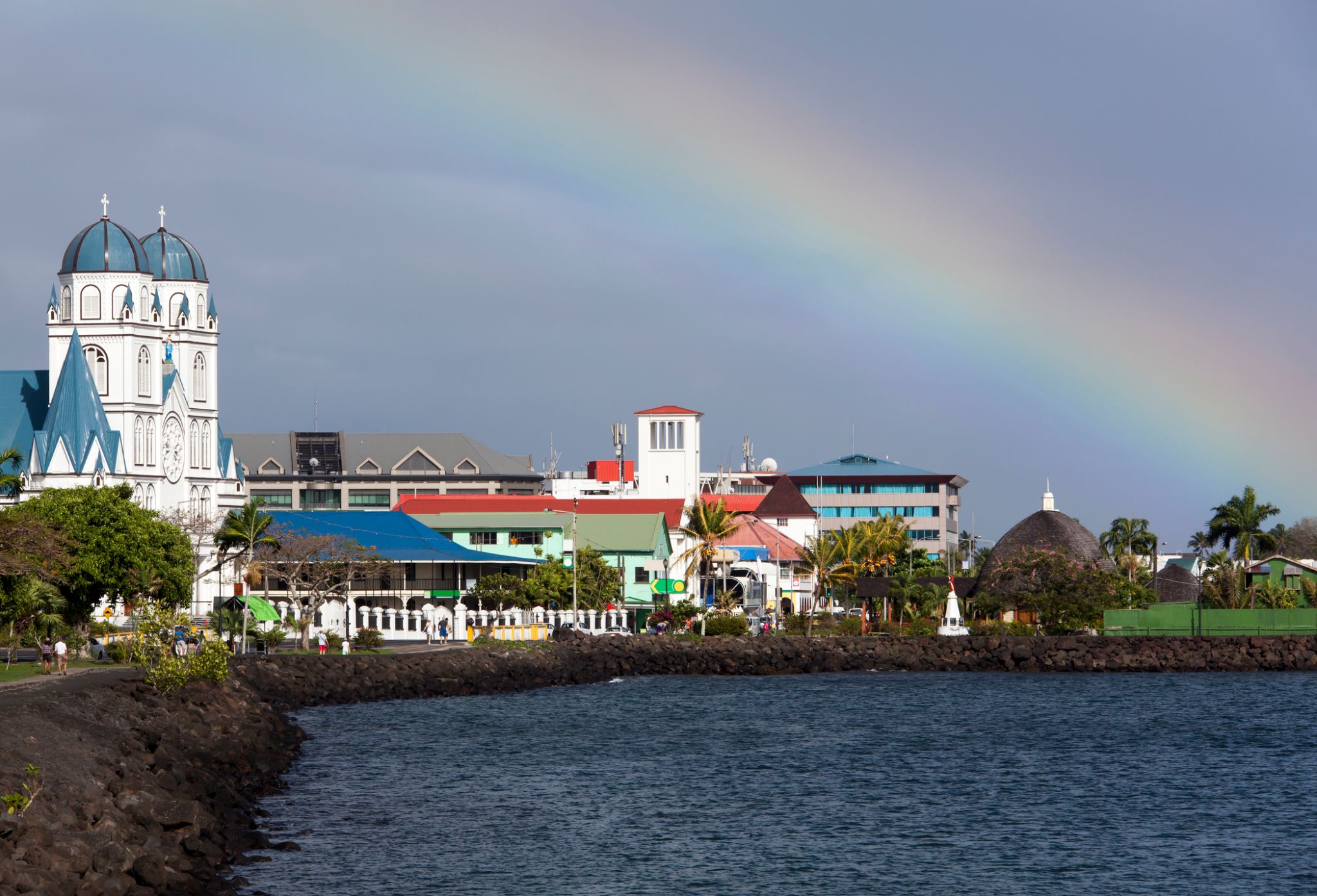 Dzień 10: 08:00-18:00
Dzień 10: 08:00-18:00Apia / Samoa
Apia is the capital and the largest city of Samoa. From 1900 to 1919, it was the capital of German Samoa. The city is located on the central north coast of Upolu, Samoa's second largest island. Apia is the only city in Samoa and falls within the political district (itūmālō) of Tuamasaga.
The Apia Urban Area has a population of 36,735 (2011 census) and is generally referred to as the City of Apia. The geographic boundaries of Apia Urban Area is mainly from Letogo village to the new industrialized region of Apia known as Vaitele.
-
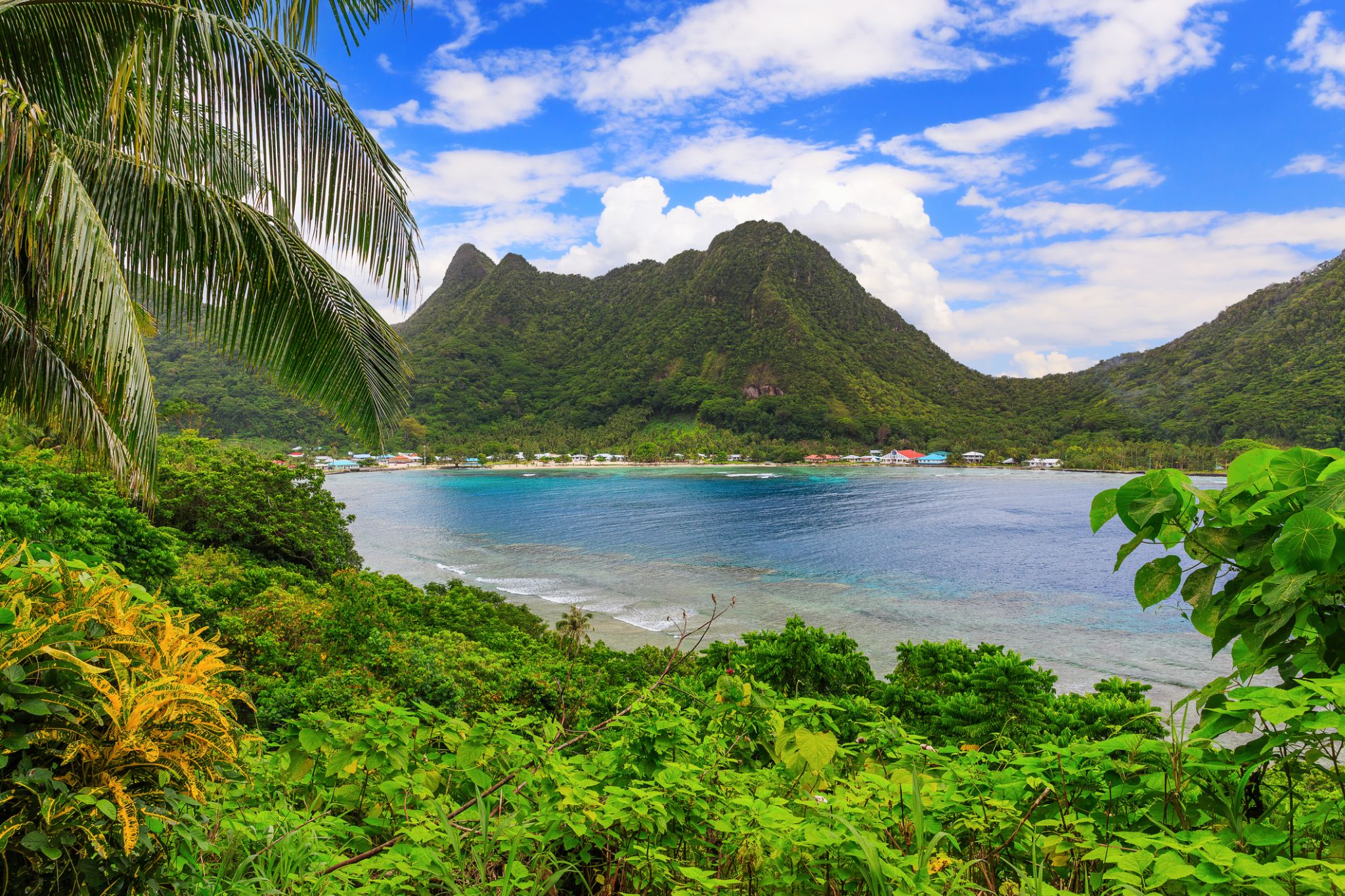 Dzień 10: 08:00-18:00
Dzień 10: 08:00-18:00Pago-Pago / Samoa
Pago Pago is the territorial capital of American Samoa. It is in Maoputasi County on the main island of American Samoa, Tutuila. It is home to one of the best and deepest natural deepwater harbors in the South Pacific Ocean, sheltered from wind and rough seas, and strategically located. The harbor is also one of the best protected in the South Pacific, which gives American Samoa a natural advantage with respect to landing fish for processing. Tourism, entertainment, food, and tunacanning are its main industries. Pago Pago was the world's 4th largest tuna processor as of 1993. It was home to two of the largest tuna companies in the world: Chicken of the Sea and StarKist, which exported an estimated $445 million in canned tuna to the U.S. mainland.
Pago Pago is the only modern urban center in American Samoa. The Greater Pago Pago Metropolitan Area encompasses several villages strung together along Pago Pago Harbor. One of the villages is itself named Pago Pago, and in 2010 had a population of 3,656. The constituent villages are, in order, Utulei, Fagatogo, Malaloa, Pago Pago, Satala and Atu'u. Fagatogo is the downtown area referred to as Town and is home to the legislature, while the executive is located in Utulei. In Fagatogo is the Fono, Police Department, Port of Pago Pago, many shops and hotels. The Greater Pago Pago Area was home to 8,000 residents in 2000.
Rainmaker Mountain (Mount Pioa) is located in Pago Pago, and gives the city the highest annual rainfall of any harbor in the world.
-
 Dzień 11:
Dzień 11:Dzień na morzu / Morze
-
 Dzień 12:
Dzień 12:Dzień na morzu / Morze
-
 Dzień 13:
Dzień 13:Dzień na morzu / Morze
-
 Dzień 14:
Dzień 14:Dzień na morzu / Morze
-
 Dzień 15:
Dzień 15:Dzień na morzu / Morze
-
 Dzień 16: 07:00-18:00
Dzień 16: 07:00-18:00Honolulu, Oahu, Hawaje / Hawaje
Honolulu is the capital and largest city of the U.S. state of Hawaiʻi. It is an unincorporated part of and the county seat of the City and County of Honolulu along the southeast coast of the island of Oʻahu. The city is the main gateway to Hawaiʻi and a major portal into the United States. The city is also a major hub for international business, military defense, as well as famously being host to a diverse variety of east-west and Pacific culture, cuisine, and traditions.
Honolulu is the most remote city of its size in the world and is the westernmost major U.S. city. For statistical purposes, the United States Census Bureau recognizes the approximate area commonly referred to as "City of Honolulu" (not to be confused with the "City and County") as a census county division (CCD). Honolulu is a major financial center of the islands and of the Pacific Ocean. The population of the Honolulu census designated place(CDP) was 359,870 as of the 2017 population estimate, while the Honolulu CCD was 390,738 and the population of the consolidated city and county was 953,207.
Honolulu means "sheltered harbor" or "calm port". The old name is Kou, a district roughly encompassing the area from Nuʻuanu Avenue to Alakea Street and from Hotel Street to Queen Street which is the heart of the present downtown district. The city has been the capital of the Hawaiian Islands since 1845 and gained historical recognition following the attack on Pearl Harbor by Japan near the city on December 7, 1941.
As of 2015, Honolulu was ranked high on world livability rankings, and was also ranked as the 2nd safest city in the U.S. It is also the most populated Oceanian city outside Australasia and ranks second to Auckland as the most-populous city in Polynesia.
-
 Dzień 17: 08:00-18:00
Dzień 17: 08:00-18:00Hilo / Hawaje
Hilo is the largest settlement and census-designated place (CDP) in Hawaii County, Hawaii, United States, which encompasses the Island of Hawaiʻi. The population was 43,263 at the 2010 census.
Hilo is the county seat of the County of Hawaiʻi and is in the District of South Hilo. The town overlooks Hilo Bay, at the base of two shield volcanoes, Mauna Loa, an active volcano, and Mauna Kea, a dormant volcano and the site of some of the world's most important ground-based astronomical observatories. Much of the city is at some risk from lava flows from Mauna Loa. The majority of human settlement in Hilo stretches from Hilo Bay to Waiākea-Uka, on the flanks of Mauna Loa.
Hilo is home to the University of Hawaiʻi at Hilo, ʻImiloa Astronomy Center of Hawaiʻi, as well as the Merrie Monarch Festival, a week-long celebration of ancient and modern hula that takes place annually after Easter. Hilo is also home to the Mauna Loa Macadamia Nut Corporation, one of the world's leading producers of macadamia nuts. The town is served by Hilo International Airport.
-
 Dzień 18:
Dzień 18:Dzień na morzu / Morze
-
 Dzień 19:
Dzień 19:Dzień na morzu / Morze
-
 Dzień 20:
Dzień 20:Dzień na morzu / Morze
-
 Dzień 21:
Dzień 21:Dzień na morzu / Morze
-
 Dzień 22:
Dzień 22:Dzień na morzu / Morze
-
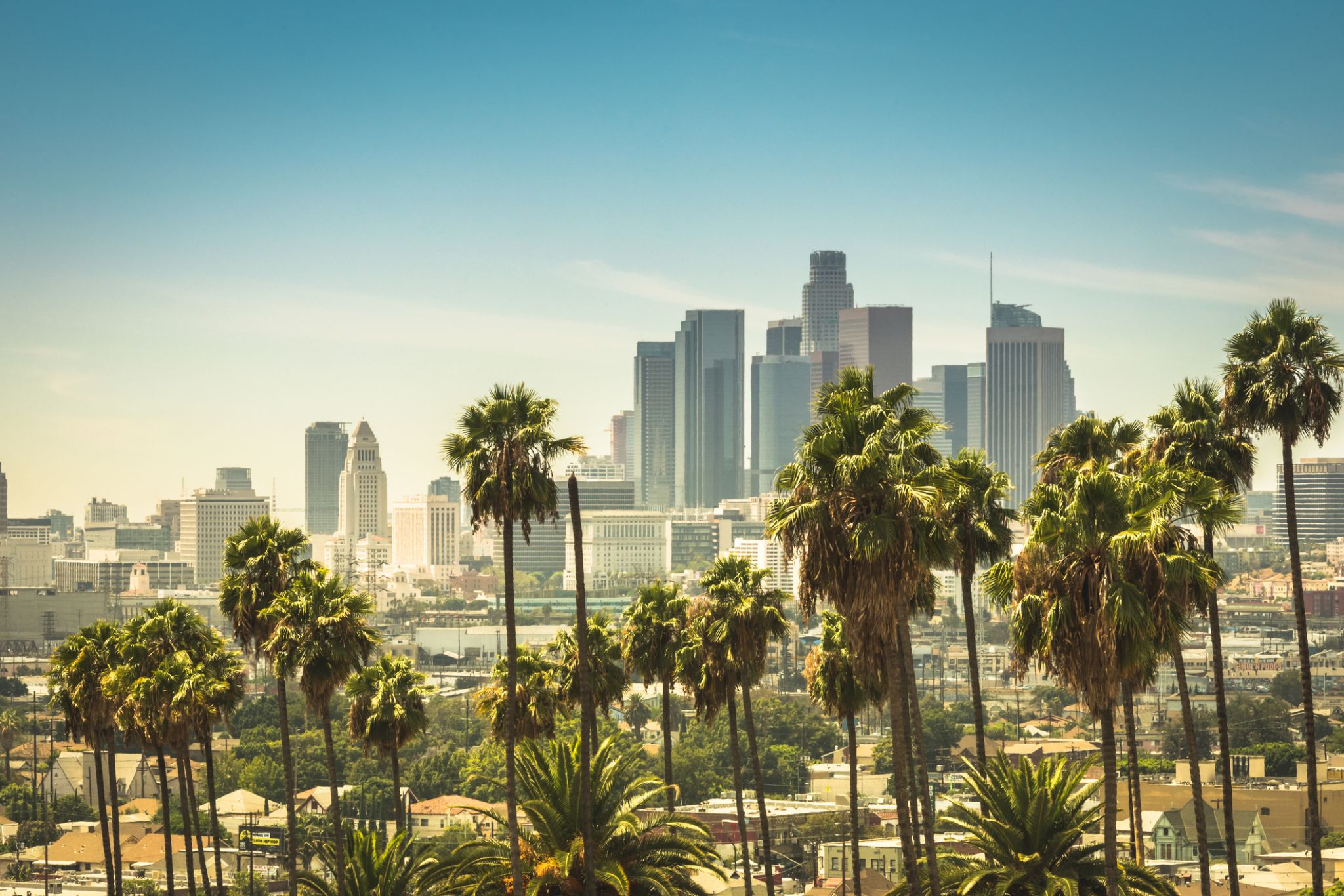 Dzień 23: 08:00-18:00
Dzień 23: 08:00-18:00Los Angeles / USA
Los Angeles officially the City of Los Angeles and often known colloquially by its initials L.A., is the most populous city in California and the second most populous city in the United States, after New York. With an estimated population of four million, Los Angeles is the cultural, financial, and commercial center of Southern California. Nicknamed the "City of Angels" partly because of its name's Spanish meaning, Los Angeles is known for its Mediterranean climate, ethnic diversity, Hollywood, and the entertainment industry, and sprawling metropolis.
Los Angeles is in a large basin bounded by the Pacific Ocean on one side and by mountains as high as 10,000 feet (3,000 m) on the others. The city proper, which covers about 469 square miles (1,210 km2), is the seat of Los Angeles County, the most populated county in the country. Los Angeles is also the principal city of the Los Angeles metropolitan area, the second largest in the United States after that of New York City, with a population of 13.1 million. It is part of the Los Angeles-Long Beach combined statistical area, also the nation's second most populous area with a 2015 estimated population of 18.7 million.
Los Angeles is one of the most substantial economic engines within the United States, with a diverse economy in a broad range of professional and cultural fields. Los Angeles is also famous as the home of Hollywood, a major center of the world entertainment industry. A global city, it has been ranked 6th in the Global Cities Index and 9th in the Global Economic Power Index. The Los Angeles combined statistical area also has a gross metropolitan productof $831 billion (as of 2008), making it the third-largest in the world, after the Tokyo and New York metropolitan areas. Los Angeles hosted the 1932 and 1984 Summer Olympics and will host the event for a third time in 2028. The city also hosted the Miss Universe pageant twice, in 1990 and 2006, and was one of 9 American cities to host the 1994 FIFA men's soccer World Cup and one of 8 to host the 1999 FIFA women's soccer World Cup, hosting the finalmatch for both tournaments.
Historically home to the Chumash and Tongva, Los Angeles was claimed by Juan Rodríguez Cabrillo for Spain in 1542 along with the rest of what would become Alta California. The city was officially founded on September 4, 1781, by Spanish governor Felipe de Neve. It became a part of Mexico in 1821 following the Mexican War of Independence. In 1848, at the end of the Mexican–American War, Los Angeles and the rest of California were purchased as part of the Treaty of Guadalupe Hidalgo, becoming part of the United States. Los Angeles was incorporated as a municipality on April 4, 1850, five months before California achieved statehood. The discovery of oil in the 1890s brought rapid growth to the city. The completion of the Los Angeles Aqueduct in 1913, delivering water from Eastern California, later assured the city's continued rapid growth.
-
 Dzień 24:
Dzień 24:Dzień na morzu / Morze
-
 Dzień 25:
Dzień 25:Dzień na morzu / Morze
-
 Dzień 26: 08:00-16:00
Dzień 26: 08:00-16:00Cabo San Lucas / Meksyk
Cabo San Lucas or simply Cabo, is a resort city at the southern tip of the Baja California Peninsula, in the Mexican state of Baja California Sur. As of 2015, the population of the city was 81,111 inhabitants. Cabo San Lucas together with San José del Cabo is known as Los Cabos. Together they form a metropolitan area of 305,983 inhabitants.
Cabo has been rated as one of Mexico's top 5 tourist destinations; it is known for its beaches, scuba diving locations, balnearios, the sea arch El Arco de Cabo San Lucas, and marine life. The Los Cabos Corridor has become a heavily trafficked vacation destination for tourists, with numerous resorts and timeshares along the coast between Cabo San Lucas and San José del Cabo.
Cabo houses a range of wildlife, including rays, sharks, birds, and a range of fish, such as mahi-mahi (dorado), and striped marlin.
-
 Dzień 27:
Dzień 27:Dzień na morzu / Morze
-
 Dzień 28:
Dzień 28:Dzień na morzu / Morze
-
 Dzień 29:
Dzień 29:Dzień na morzu / Morze
-
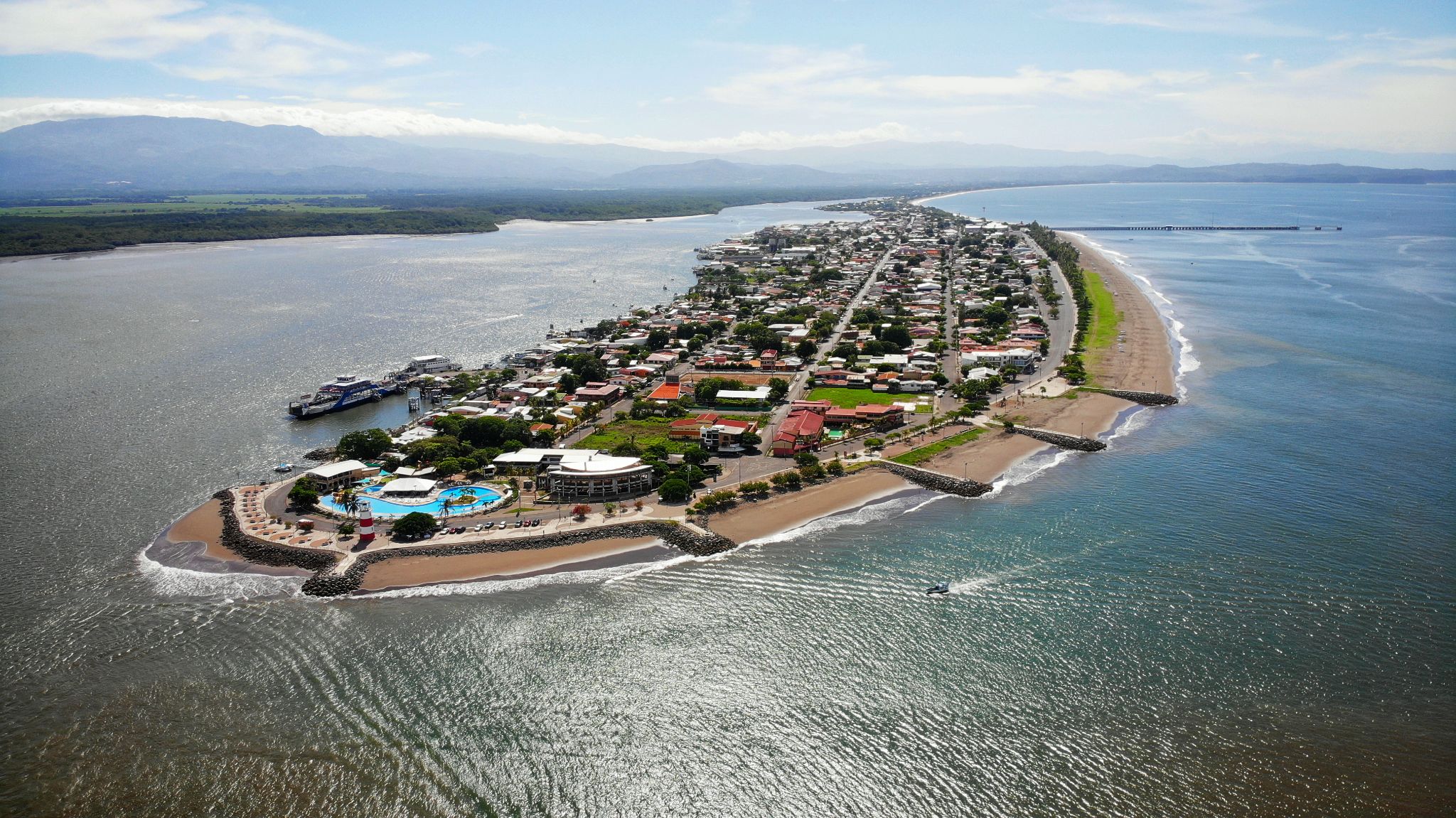 Dzień 30: 10:00-18:00
Dzień 30: 10:00-18:00Puntarenas / Costa Rica
Puntarenas is the capital and largest city in the Province of Puntarenas, on the Pacific coast of Costa Rica.
-
 Dzień 31: 05:15
Dzień 31: 05:15Dzień na morzu / Morze
-
 Dzień 31: 17:00
Dzień 31: 17:00Kanał Panamski / Panama
The Panama Canal is an artificial 82 km (51 mi) waterway in Panama that connects the Atlantic Ocean with the Pacific Ocean. The canal cuts across the Isthmus of Panama and is a conduit for maritime trade. Canal locks are at each end to lift ships up to Gatun Lake, an artificial lake created to reduce the amount of excavation work required for the canal, 26 m (85 ft) above sea level, and then lower the ships at the other end. The original locks are 34 m (110 ft) wide. A third, wider lane of locks was constructed between September 2007 and May 2016. The expanded canal began commercial operation on June 26, 2016. The new locks allow transit of larger, post-Panamax ships, capable of handling more cargo.
France began work on the canal in 1881, but stopped due to engineering problems and a high worker mortality rate. The United States took over the project in 1904 and opened the canal on August 15, 1914. One of the largest and most difficult engineering projects ever undertaken, the Panama Canal shortcut greatly reduced the time for ships to travel between the Atlantic and Pacific Oceans, enabling them to avoid the lengthy, hazardous Cape Horn route around the southernmost tip of South America via the Drake Passage or Strait of Magellan.
Colombia, France, and later the United States controlled the territory surrounding the canal during construction. The US continued to control the canal and surrounding Panama Canal Zone until the 1977 Torrijos–Carter Treatiesprovided for handover to Panama. After a period of joint American–Panamanian control, in 1999, the canal was taken over by the Panamanian government. It is now managed and operated by the government-owned Panama Canal Authority.
-
 Dzień 32: 05:00-17:15
Dzień 32: 05:00-17:15Kanał BLB-Panam / Panama
-
 Dzień 33:
Dzień 33:Dzień na morzu / Morze
-
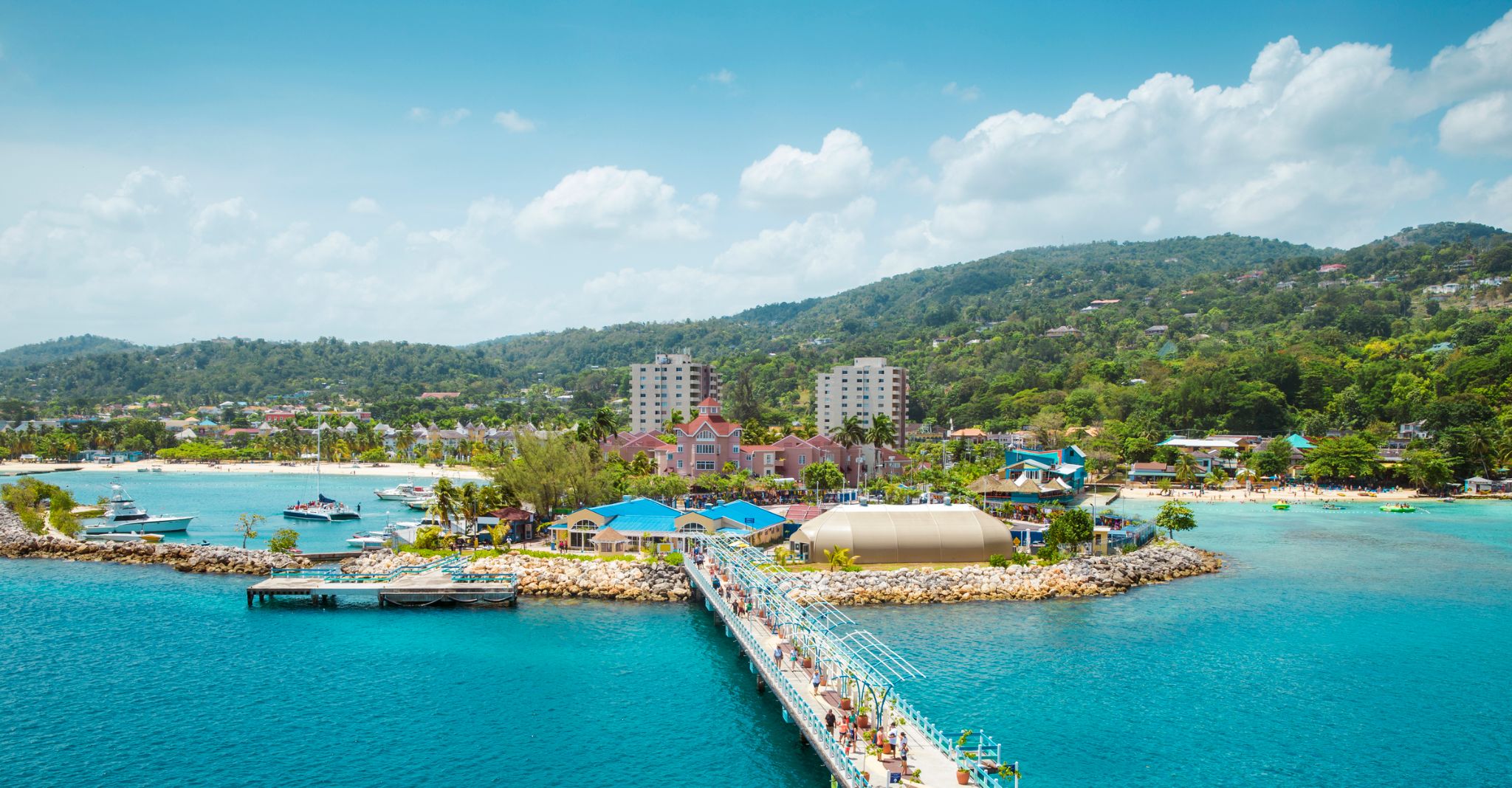 Dzień 34: 08:00-18:00
Dzień 34: 08:00-18:00Ocho-Rios / Jamajka
Ocho Rios (Spanish for "Eight Rivers") is a town in the parish of Saint Ann on the north coast of Jamaica. Just outside the city, travelers and residents can visit Columbus Park, where Columbus supposedly first came on land, and see maritime artifacts and Spanish colonial buildings.
It was once a fishing village but now caters to tourists.
-
 Dzień 35:
Dzień 35:Dzień na morzu / Morze
-
 Dzień 36:
Dzień 36:Dzień na morzu / Morze
-
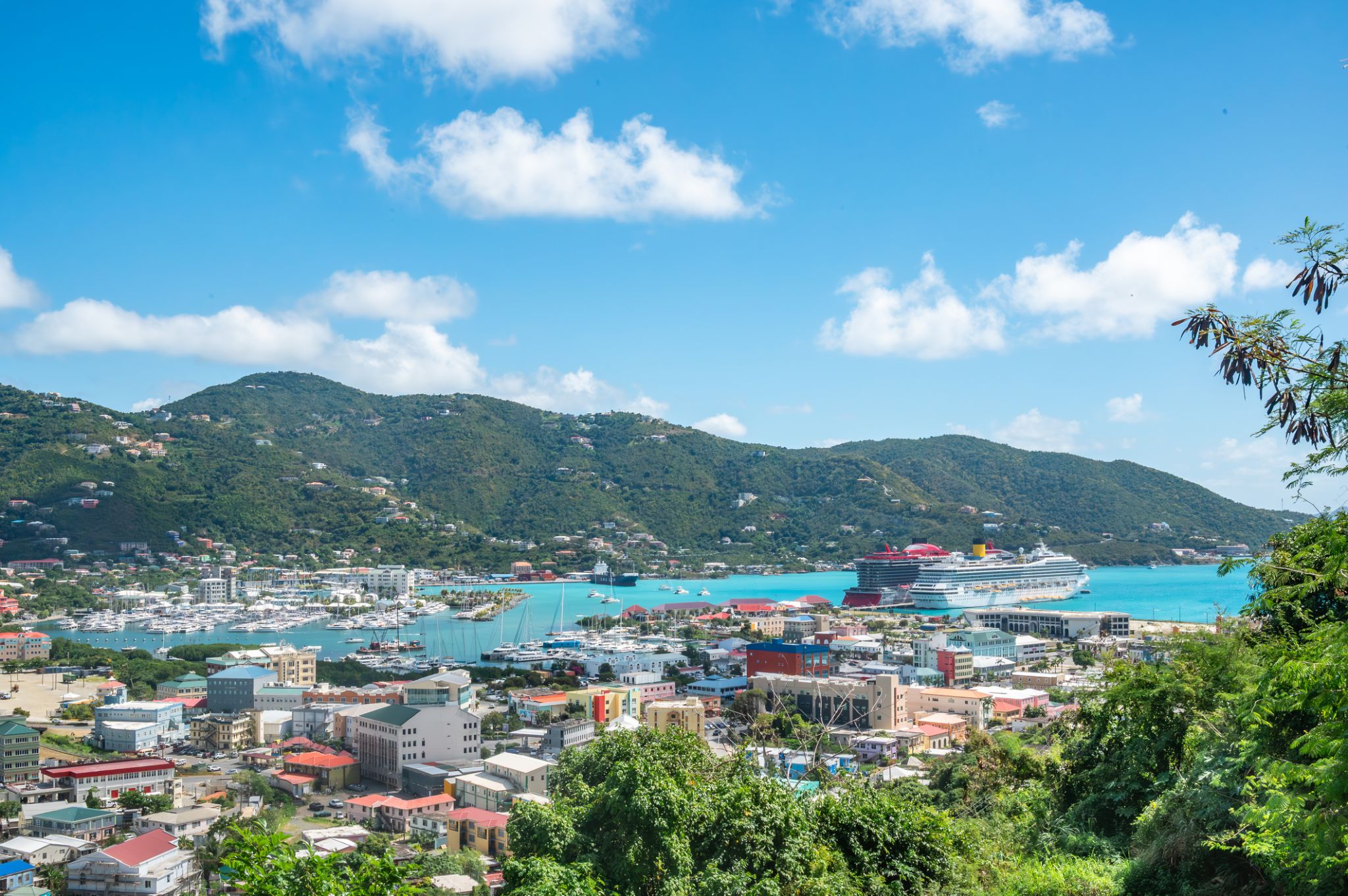 Dzień 37: 08:00-18:00
Dzień 37: 08:00-18:00Road Town, Tortola / Wyspy Dziewicze
W sercu Karaibów, na wyspie Tortola, znajduje się jeden z najbardziej tętniących życiem i interesujących portów — Road Town. To miasto jest nie tylko stolicą Brytyjskich Wysp Dziewiczych, ale także ważnym punktem dla żeglarzy i turystów podróżujących po Karaibach. Można tu poczuć atmosferę tętniącego tropikalnego miasta, spacerować po malowniczych uliczkach z kolonialną architekturą i odkrywać lokalne rynki z egzotycznymi towarami i pamiątkami. Road Town to idealne miejsce, aby poznać kulturę i tradycje archipelagu, ciesząc się niesamowitymi widokami na ocean i sąsiednie wyspy.
Miasto słynie także z bliskości niesamowitych naturalnych piękności, takich jak rafy koralowe i dziewicze plaże. Turyści mogą wziąć udział w wycieczkach, w tym rejsach łodzią, snorkelingu lub nurkowaniu, aby zbadać podwodny świat, a także odwiedzić zabytki i rezerwaty przyrody. Dla miłośników przygód Road Town oferuje idealne połączenie aktywnego wypoczynku i relaksu wśród zapierających dech w piersiach krajobrazów.
-
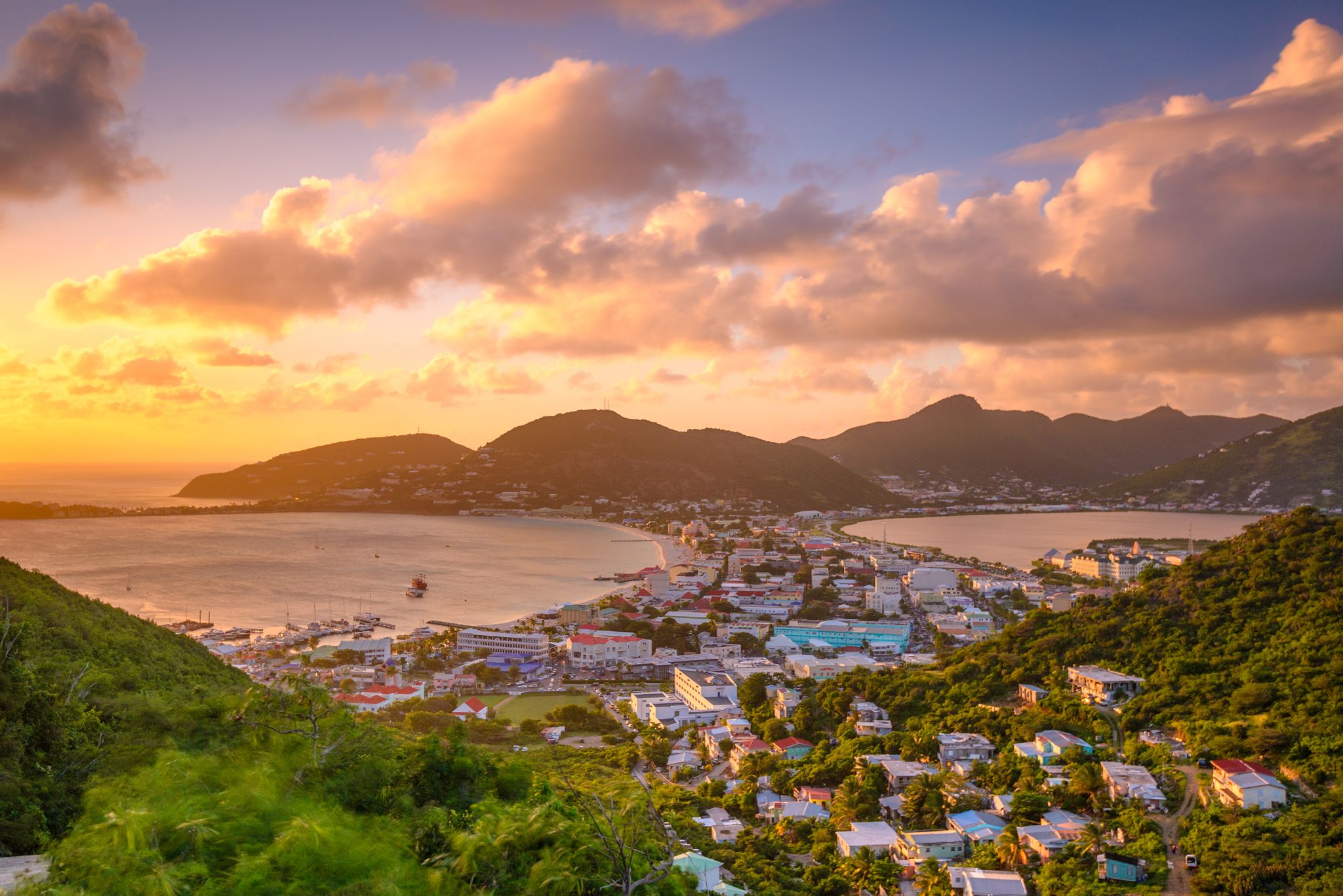 Dzień 38: 08:00-18:00
Dzień 38: 08:00-18:00Philipsburg / Saint Martin
-
 Dzień 39:
Dzień 39:Dzień na morzu / Morze
-
 Dzień 40:
Dzień 40:Dzień na morzu / Morze
-
 Dzień 41:
Dzień 41:Dzień na morzu / Morze
-
 Dzień 42:
Dzień 42:Dzień na morzu / Morze
-
 Dzień 43:
Dzień 43:Dzień na morzu / Morze
-
 Dzień 44:
Dzień 44:Dzień na morzu / Morze
-
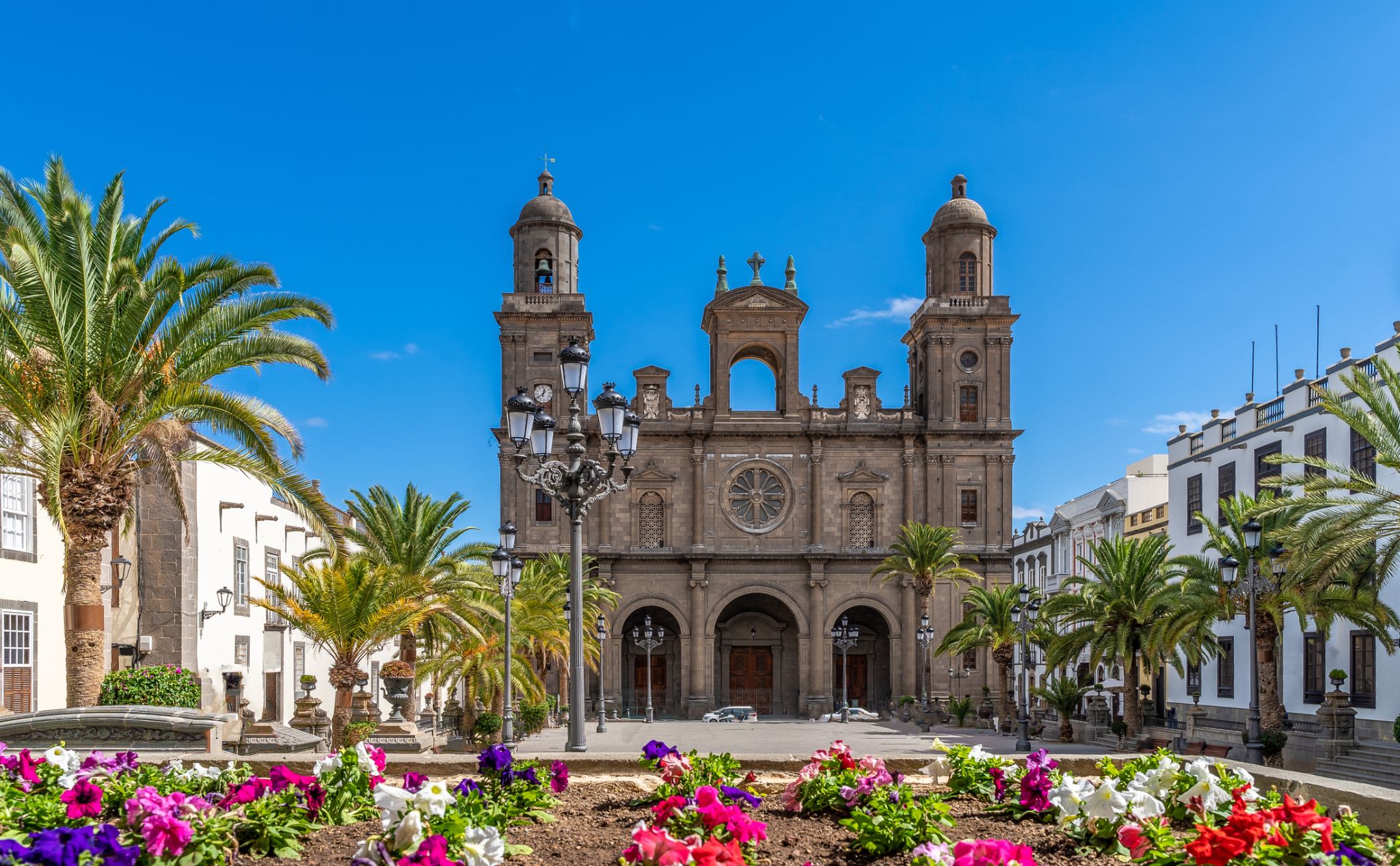 Dzień 45: 08:00-18:00
Dzień 45: 08:00-18:00Las Palmas (Gran Canaria) / Hiszpania
-
 Dzień 46:
Dzień 46:Dzień na morzu / Morze
-
 Dzień 47:
Dzień 47:Dzień na morzu / Morze
-
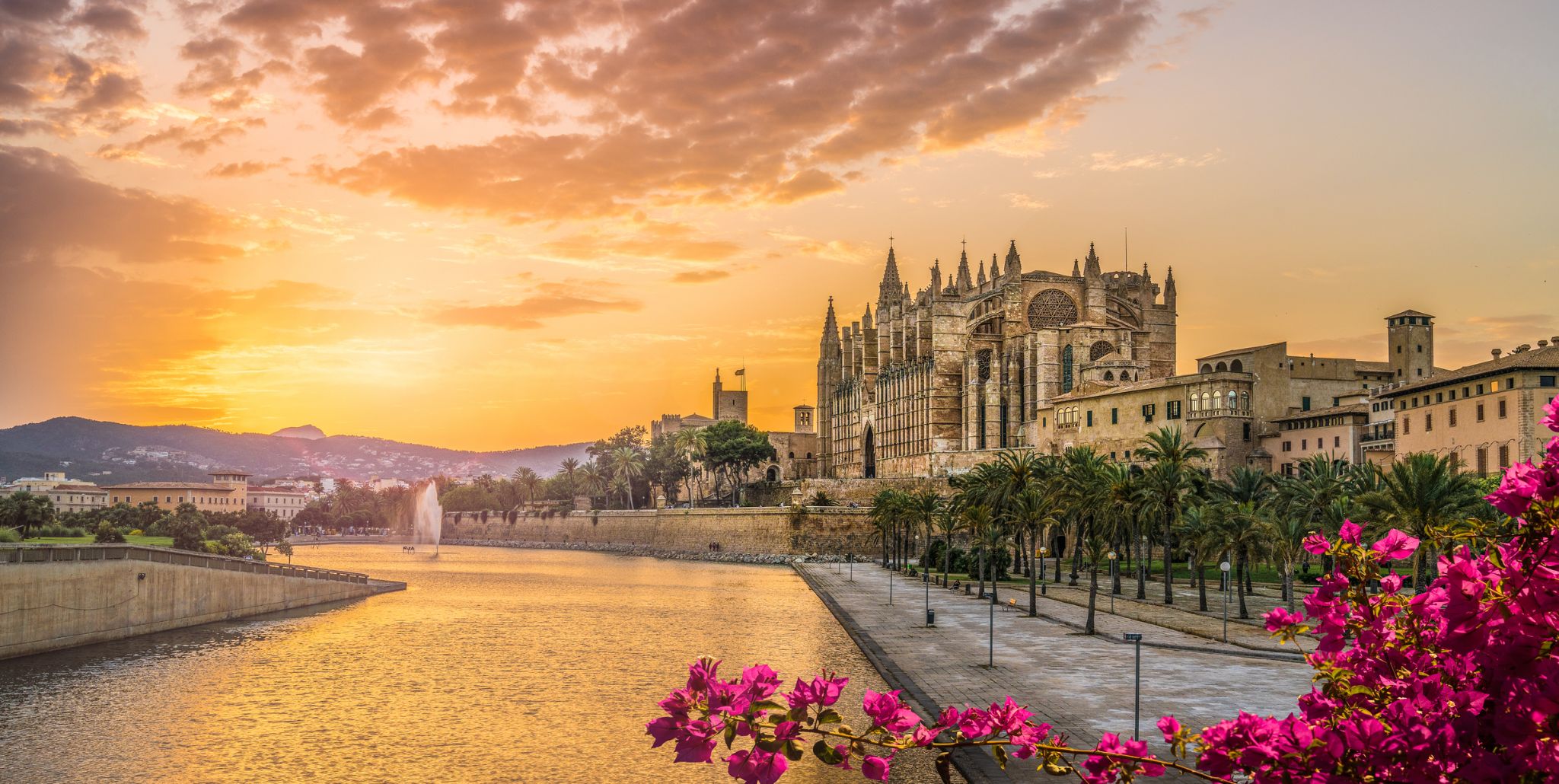 Dzień 48: 10:00-19:00
Dzień 48: 10:00-19:00Palma de Mallorca / Hiszpania
Mallorca is the largest island in the Balearic Islands, which are part of Spain and located in the Mediterranean. The native language, as on the rest of the Balearic Islands, is Catalan, which is co-official with Spanish.
The capital of the island, Palma, is also the capital of the autonomous community of the Balearic Islands. The Balearic Islands have been an autonomous region of Spain since 1983. There are two small islands off the coast of Mallorca: Cabrera (southeast of Palma) and Dragonera (west of Palma). The anthem of Mallorca is "La Balanguera".
Like the other Balearic Islands of Menorca, Ibiza and Formentera, the island is an extremely popular holiday destination, particularly for tourists from Germany and the United Kingdom. The international airport, Palma de Mallorca Airport, is one of the busiest in Spain; it was used by 28.0 million passengers in 2017, increasing every year since 2012.
The name derives from Classical Latin insula maior, "larger island". Later, in Medieval Latin, this became Maiorica, "the larger one", in comparison to Menorca, "the smaller one".
-
 Dzień 49:
Dzień 49:Dzień na morzu / Morze
-
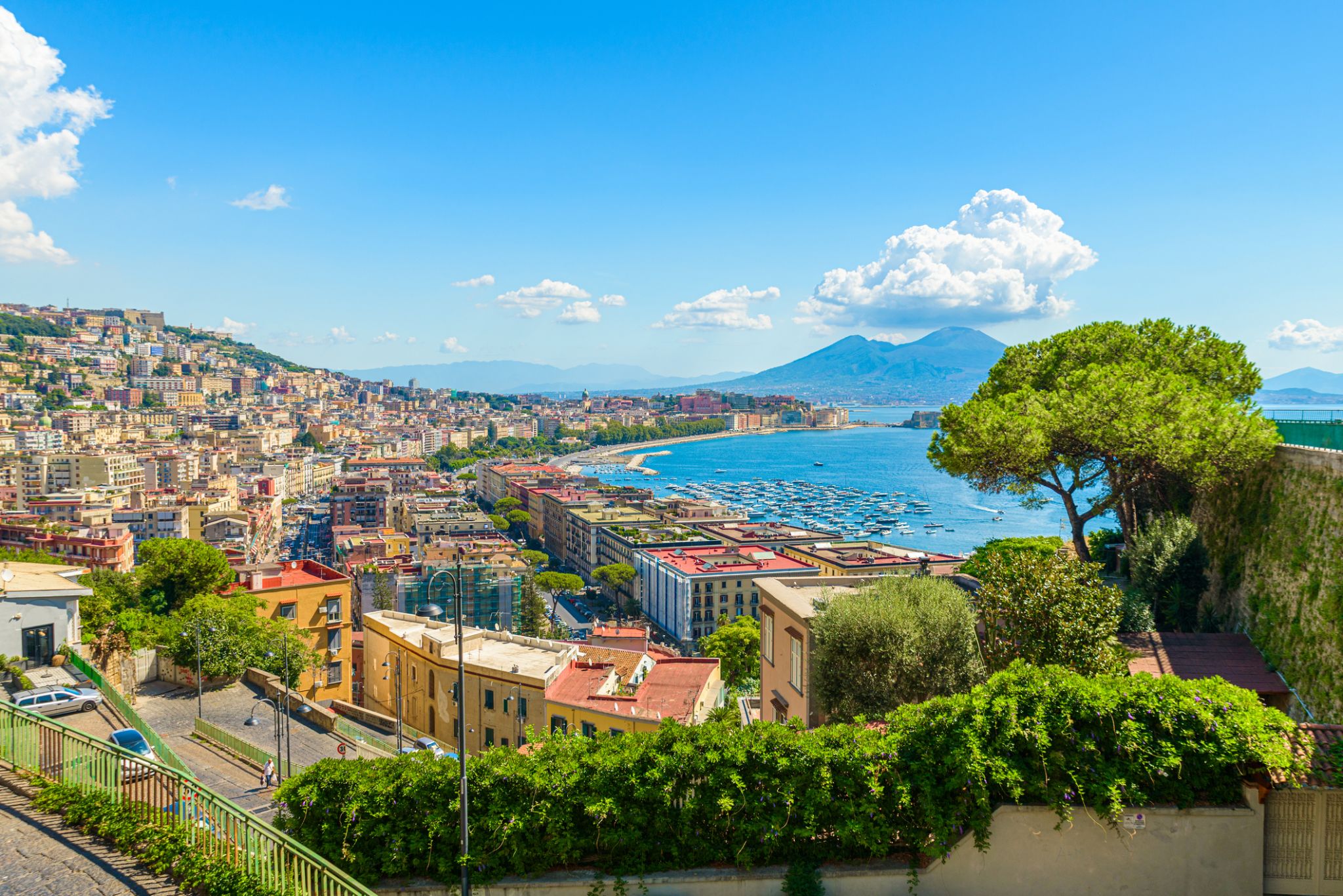 Dzień 50: 08:00-19:00
Dzień 50: 08:00-19:00Neapol / Włochy
Naples is the regional capital of Campania and the third-largest municipality in Italyafter Rome and Milan. In 2017, around 967,069 people lived within the city's administrative limits while its province-level municipality has a population of 3,115,320 residents. Its continuously built-up metropolitan area (that stretches beyond the boundaries of the Metropolitan City of Naples) is the second or third largest metropolitan area in Italy and one of the most densely populated cities in Europe.
First settled by Greeks in the second millennium BC, Naples is one of the oldest continuously inhabited urban areas in the world. In the ninth century BC, a colony known as Parthenope or Παρθενόπη was established on the Island of Megaride, later refounded as Neápolis in the sixth century BC. The city was an important part of Magna Graecia, played a major role in the merging of Greek and Roman society and a significant cultural centre under the Romans. It served as the capital of the Duchy of Naples (661–1139), then of the Kingdom of Naples (1282–1816) and finally of the Two Sicilies until the unification of Italy in 1861.
Between 1925 and 1936, Naples was expanded and upgraded by Benito Mussolini's government but subsequently sustained severe damage from Allied bombing during World War II, which led to extensive post-1945 reconstruction work. Naples has experienced significant economic growth in recent decades, helped by the construction of the Centro Direzionale business district and an advanced transportation network, which includes the Alta Velocità high-speed rail link to Rome and Salerno and an expanded subway network. Naples is the third-largest urban economy in Italy, after Milan and Rome. The Port of Naples is one of the most important in Europe and home of the Allied Joint Force Command Naples, the NATO body that oversees North Africa, the Sahel and Middle East.
Naples' historic city centre is the largest in Europe and a UNESCO World Heritage Site, with a wide range of culturally and historically significant sites nearby, including the Palace of Caserta and the Roman ruins of Pompeii and Herculaneum. Naples is also known for its natural beauties such as Posillipo, Phlegraean Fields, Nisida, and Vesuvius.
Neapolitan cuisine is synonymous with pizza – which originated in the city – but it also includes many lesser-known dishes; Naples has the greatest number of accredited stars from the Michelin Guide of any Italian city.
The best-known sports team in Naples is the Serie A club S.S.C. Napoli, two-time Italian champions who play at the San Paolo Stadium in the southwest of the city, in the Fuorigrotta quarter.
-
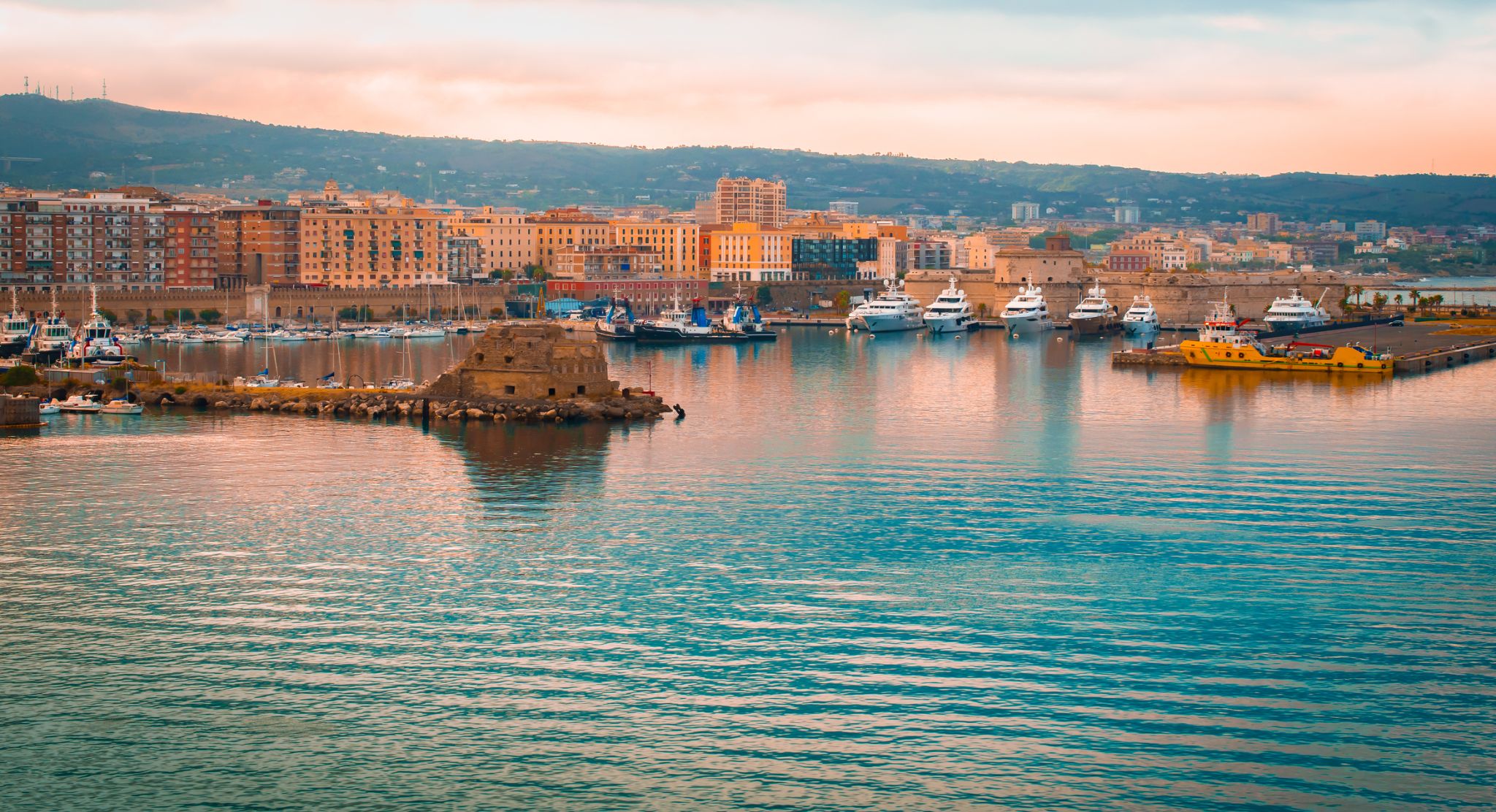 Dzień 51: 08:00
Dzień 51: 08:00Rzym (Civitavecchia) / Włochy
Rome is the capital city and a special comune of Italy (named Comune di Roma Capitale). Rome also serves as the capital of the Lazio region. With 2,872,800 residents in 1,285 km2(496.1 sq mi), it is also the country's most populated comune. It is the fourth-most populous city in the European Union by population within city limits. It is the centre of the Metropolitan City of Rome, which has a population of 4,355,725 residents, thus making it the most populous metropolitan city in Italy. Rome is located in the central-western portion of the Italian Peninsula, within Lazio (Latium), along the shores of the Tiber. The Vatican City (the smallest country in the world) is an independent country inside the city boundaries of Rome, the only existing example of a country within a city: for this reason Rome has been often defined as capital of two states.
Rome's history spans 28 centuries. While Roman mythology dates the founding of Rome at around 753 BC, the site has been inhabited for much longer, making it one of the oldest continuously occupied sites in Europe. The city's early population originated from a mix of Latins, Etruscans, and Sabines. Eventually, the city successively became the capital of the Roman Kingdom, the Roman Republic and the Roman Empire, and is regarded as the birthplace of Western civilization and by some as the first ever metropolis. It was first called The Eternal City (Latin: Urbs Aeterna; Italian: La Città Eterna) by the Roman poet Tibullus in the 1st century BC, and the expression was also taken up by Ovid, Virgil, and Livy. Rome is also called the "Caput Mundi" (Capital of the World). After the fall of the Western Empire, which marked the beginning of the Middle Ages, Rome slowly fell under the political control of the Papacy, which had settled in the city since the 1st century AD, until in the 8th century it became the capital of the Papal States, which lasted until 1870. Beginning with the Renaissance, almost all the popes since Nicholas V (1447–1455) pursued over four hundred years a coherent architectural and urban programme aimed at making the city the artistic and cultural centre of the world. In this way, Rome became first one of the major centres of the Italian Renaissance, and then the birthplace of both the Baroque style and Neoclassicism. Famous artists, painters, sculptors and architects made Rome the centre of their activity, creating masterpieces throughout the city. In 1871, Rome became the capital of the Kingdom of Italy, which, in 1946, became the Italian Republic.
Rome has the status of a global city. In 2016, Rome ranked as the 14th-most-visited city in the world, 3rd most visited in the European Union, and the most popular tourist attraction in Italy. Its historic centre is listed by UNESCO as a World Heritage Site. The famous Vatican Museums are among the world's most visited museums while the Colosseum was the most popular tourist attraction in world with 7.4 million visitors in 2018. Host city for the 1960 Summer Olympics, Rome is the seat of several specialized agencies of the United Nations, such as the Food and Agriculture Organization (FAO), the World Food Programme (WFP) and the International Fund for Agricultural Development (IFAD). The city also hosts the Secretariat of the Parliamentary Assembly of the Union for the Mediterranean (UfM) as well as the headquarters of many international business companies such as Eni, Enel, TIM, Leonardo S.p.A., and national and international banks such as Unicredit and BNL. Its business district, called EUR, is the base of many companies involved in the oil industry, the pharmaceutical industry, and financial services. Rome is also an important fashion and design centre thanks to renowned international brands centered in the city. Rome's Cinecittà Studios have been the set of many Academy Award–winning movies.

